NEW SCHEME OF WORK
WEEKS TOPICS
1. Revision of last term’s work. Finding Help: Meaning and Skills Necessary for Finding Help.
2. Storage: (a) Meaning of storage e.g. keeping things for future use. (b) Ways of
Storing things – drying, refrigeration, sealing, bagging, etc. (c) Things we store-
Meat, Fish, Pepper, Vegetables, Yams, Corns, etc. (d)Reasons for storing things
Properly – to keep things in good condition and fresh, to preserve and get them
To stay longer for future use.
3. Savings and Ways of saving: (a) Reasons for saving: (i) To have money for future
Use, (ii) For solving unexpected problems, (iii) For future investment. (b) Ways of
Saving in the past – Pots, in the ground, with relations, with money keepers, unde
The pillow. (c) Modern ways of saving – in the Banks, Finance houses, Cooperative
Buying of shocks/shares, etc.
4. Keeping Money in the Bank: (a) Advantages of keeping money in the Bank – Con-
Troll reckless spending, Can be withdrawn when needed, Yields interest, Privacy.
(b) Problems e.g. conditions for saving, illiteracy, error in documentation, etc.
(c) Solutions – education, modern gadgets, services humility, patience, diligence,
5. Resources: (a) Meaning of resources: those things that we need for production.
(b) Examples of resources – Human, Natural, Raw materials, Equipment, Money.
(c) Uses of raw materials – They are used for producing other finished goods e.g.
Cassava is raw material used for producing garri.
6. Transportation: (a) Meaning of transportation –means of moving goods,
people and services from one place to another. (b) Olden days means of
transportation –horses, canoe, donkeys, etc. (c) Modern means of
transportation
7. Advantages and Problems of Modern Means of Transportation:
(a) Advantages of modern means of transportation (b) Problems e.g. – Poor
maintenance culture. (c) Solutions e.g. Patriotism.
8. Harmful Substances: (a) Meaning of harmful substances (b) Examples of
harmful substances (c) Ways of preventing intake of harmful substances
9. Drug Abuse: (a) Meaning of drug Abuse (b) Dangers of drug abuse (c) Way
of preventing drug abuse.
10. Water Supply: (a) Describe of water supply (b) Sources of water (c) Keeping sources of water clean.
11. REVISION
OLD SCHEME OF WORK
WEEK TOPIC
1. Revision of last term's work/science, technology and society.
2. Science, technology and society
- Meaning of science and technology
- Importance of science and technology
3. Science, Technology and Society
- Types of traditional science and technology
- Some traditional science and technology influenced by modernization
- Influence of science and technology (modern and traditional) on societal development
4. National Economy 1
Savings and ways of saving
- Reasons for saving
- Ways of saving in the past
- Modern ways of saving
5. National Economy (ii)
- Keeping money in the bank
- Advantages of keeping money in the bank
- Problems and solution of saving money in the bank
6. National Economy (iii)
Resources
- Meaning of resources
- Uses of raw material resources
7. National Economy (iv)
Transportation
- Meaning of transportation
- Olden days means of transportation
- Modern means of transportation
- Advantages of modern means of transportation
8. National Economy (v)
- Problems of modern means of transportation
- Suggest ways of solving these problems
9. National Economy (vi)
Communication
- Meaning of communication
- Means of communication in traditional and modern times
- Roles of communication in National Economy.
10. National Cultural patterns: Ethnic Groups and their Locations
Common Heritage and national Symbol; Heroes and Heroine
11. Revision
3RD TERM
WEEK 1
LESSON 1
Topic: Finding help
Specific topic: Meaning of Finding Help
Reference book: SOLAKAT NEW SYLLABUS ON SOCIAL STUDIES FOR J.S.S VOLUME 2
Performance Objective: At the end of the lesson, the students should be able to;
(a) state the meaning of finding Help
(b) identify problems/situations when people need help
(c)mention people who can help.
Content:
FINDING HELP:
Find help means providing or seeking assistance or support in order to find a remedy or relief from a problem. It is the act of making a situation more bearable.
The independent of the youth notwithstanding, they sometimes need to talk with an adults because they see adults as role models and friends; hence we need the help of adolescents to make transition into adulthood.
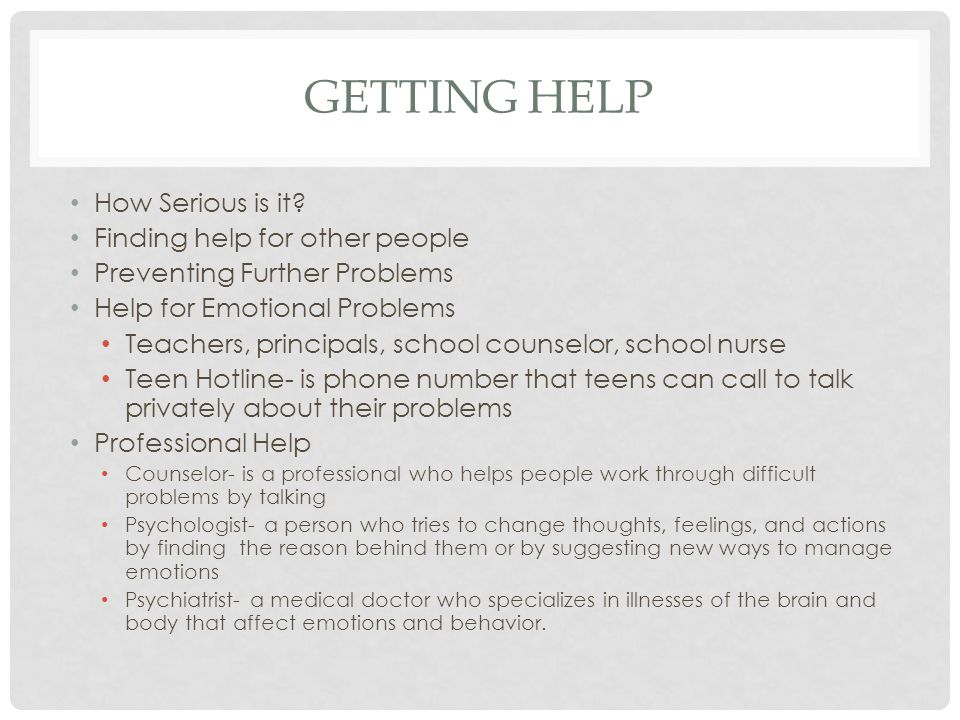
SITUATION WHEN PEOPLE NEED HELP
1. People need help when entering into a new relationships.
2. People need help in time of poverty or lack of shelter
3. They need help during emotional disturbances.
4. They need help when they are worried about changes in their bodies.
5. It is needed during unplanned pregnancy
6. It is needed when you leave educational problems.
7. help is needed for drug addict.

PEOPLE WHO CAN HELP
1. Parental Guardians and other family members
2. Counsellor
3. Religious leaders e.g. Posters, Imams etc.
4. Teachers
5. Health workers like doctors.
6. Trusted experienced adults.
7. Law enforcement agency like police
8. Social workers
9. Adolescent focused non-governmental organizations
10. Public complain commissions.
Evaluation:
(i) state the meaning of finding help
(ii)mention at least seven situation when people need help
(iii) list 10 people that can help on time of need.
Assignment: Explain the skills necessary when seeking help.
LESSON 2
Specific topic: Skills Necessary for Finding Help
Reference book: SOLAKAT NEW SYLLABUS ON SOCIAL STUDIES FOR J.S.S VOLUME 2
Performance Objective: At the end of the lesson, the students should be able to;
(a) explain the skills necessary for finding help
(b) describe the skills necessary for helping others
Content:
SKILLS NECESSARY WHEN SEEKING HELP:
1. An excellent verbal and non verbal communication skills are important.
2. Counselling: There should be willingness to learn more through discussions with someone else.
3. Follow up: This is the ability to seek action for help in whatever way you want.
4. Assertiveness: This refers to willingness to speak even to someone you did not know until he understand.
SKILLS NECESSARY WHEN HELPING OTHERS
1. Conducive atmosphere: There must be friendliness, sense of security, and discussion must be done in privacy.
2. Good listening habits: Ensure you understand what the person has said.
3. Empathy: You must put yourself in the person position.
4. Non-judgemental: Do not judge what the person has done.
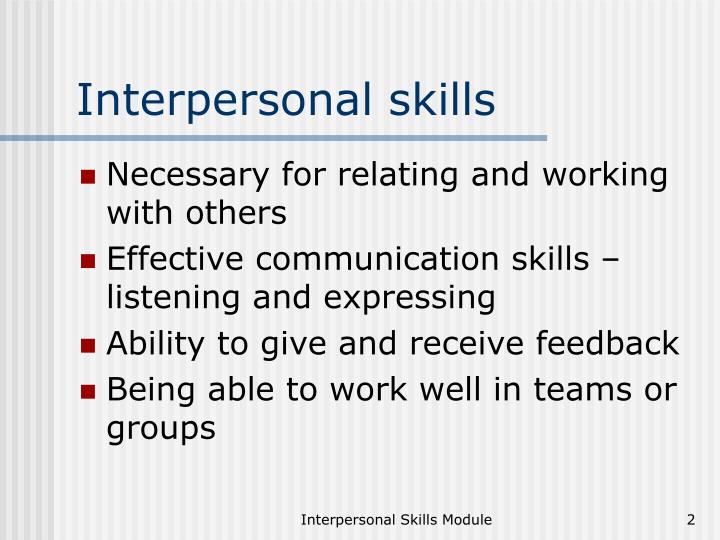
Evaluation:
(i) mention at least four skills necessary when helping others.
(ii) state at least four skills necessary when seeking help
Assignment: While helping others, why should you not be judgmental?
Topic: Finding help
Specific topic: Meaning of Finding Help
Reference book: SOLAKAT NEW SYLLABUS ON SOCIAL STUDIES FOR J.S.S VOLUME 2
Performance Objective: At the end of the lesson, the students should be able to;
(a) state the meaning of finding Help
(b) identify problems/situations when people need help
(c)mention people who can help.
Content:
FINDING HELP:
Find help means providing or seeking assistance or support in order to find a remedy or relief from a problem. It is the act of making a situation more bearable.
The independent of the youth notwithstanding, they sometimes need to talk with an adults because they see adults as role models and friends; hence we need the help of adolescents to make transition into adulthood.

SITUATION WHEN PEOPLE NEED HELP
1. People need help when entering into a new relationships.
2. People need help in time of poverty or lack of shelter
3. They need help during emotional disturbances.
4. They need help when they are worried about changes in their bodies.
5. It is needed during unplanned pregnancy
6. It is needed when you leave educational problems.
7. help is needed for drug addict.

PEOPLE WHO CAN HELP
1. Parental Guardians and other family members
2. Counsellor
3. Religious leaders e.g. Posters, Imams etc.
4. Teachers
5. Health workers like doctors.
6. Trusted experienced adults.
7. Law enforcement agency like police
8. Social workers
9. Adolescent focused non-governmental organizations
10. Public complain commissions.
Evaluation:
(i) state the meaning of finding help
(ii)mention at least seven situation when people need help
(iii) list 10 people that can help on time of need.
Assignment: Explain the skills necessary when seeking help.
LESSON 2
Specific topic: Skills Necessary for Finding Help
Reference book: SOLAKAT NEW SYLLABUS ON SOCIAL STUDIES FOR J.S.S VOLUME 2
Performance Objective: At the end of the lesson, the students should be able to;
(a) explain the skills necessary for finding help
(b) describe the skills necessary for helping others
Content:
SKILLS NECESSARY WHEN SEEKING HELP:
1. An excellent verbal and non verbal communication skills are important.
2. Counselling: There should be willingness to learn more through discussions with someone else.
3. Follow up: This is the ability to seek action for help in whatever way you want.
4. Assertiveness: This refers to willingness to speak even to someone you did not know until he understand.
SKILLS NECESSARY WHEN HELPING OTHERS
1. Conducive atmosphere: There must be friendliness, sense of security, and discussion must be done in privacy.
2. Good listening habits: Ensure you understand what the person has said.
3. Empathy: You must put yourself in the person position.
4. Non-judgemental: Do not judge what the person has done.

Evaluation:
(i) mention at least four skills necessary when helping others.
(ii) state at least four skills necessary when seeking help
Assignment: While helping others, why should you not be judgmental?
WEEK 2
LESSON 3
TOPIC: STORAGE
CONTENT: 1. Meaning of storage
2. Ways of storing things
3. Things we store
4. Reasons for storing things properly
MEANING OF STORAGE
Storage is the process of keeping things for future use. It involves keeping and preserving in safe condition and suitable facility for use.
For effective storage, most of the products need to be preserved before storage. Preservation is the way of caring or treating food item so that it remains in good condition for a long period of time.
Some of the ways of preserving our products include:
1. Drying e.g. agricultural products such as Cocoa, Maize.
2. By adding chemicals to the products.

WAYS OF STORING THINGS
1. Warehouse: A warehouse is a special building in which certain goods are kept before being distributed to the users.
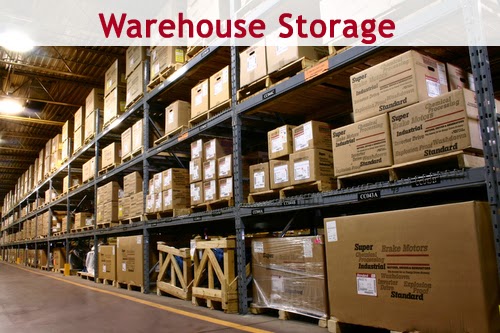
2. Shops: A shop is where commodities are kept before being purchased by consumers. Examples include provision stores that sell goods such as Bournvita, Biro, Sweets, etc.
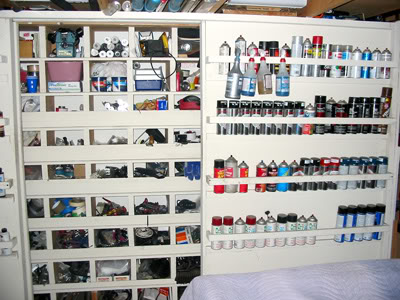
3. Food store: This is often part of the kitchen in which food items such as beans, yam, oil, etc. are kept. Other form of food stores are storage cupboards, cabinets and shelves.

4. Refrigerator/Freezer: These are electrical appliances in which perishable items such as frozen food like fish, vegetables, fruits, etc are kept for preservation.
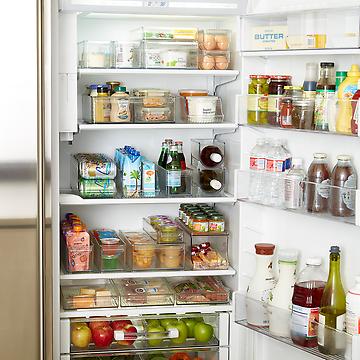
5. Silos: This is the scientific way of storing grains in large quantity. Silos which may be cylindrical or rectangular in shape are made from aluminum, plywood, rubber or steel. Silos are always air tight. Grains or cereal to be stored in a silos must be dried.
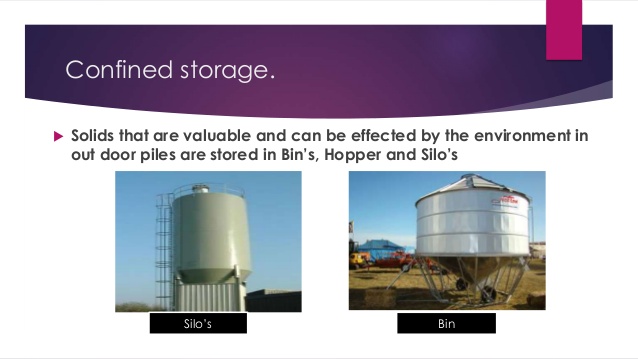
6. Barns: This is most traditional form of storing yams in Nigeria. A barn is made up of wood vertically and horizontally arranged to hold the yams. The yams are often spaced from each other and tied with strings to the wood.
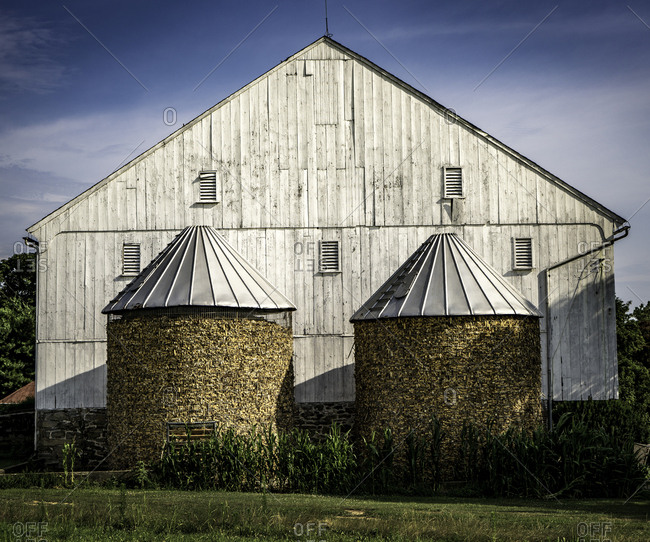
7. Cribs: Cribs are used for storing cereal especially guinea corn and maize during the dry season. Maize cobs are harvested when they are still wet and stored in the cribs. They are provided with adequate ventilation that helps to dry up the cobs. It also helps in controlling insect and rodent attack.

8. Bagging: Products such as maize, beans, sugar, flour etc are kept inside bag before they are stored in a place. This is called Bagging.
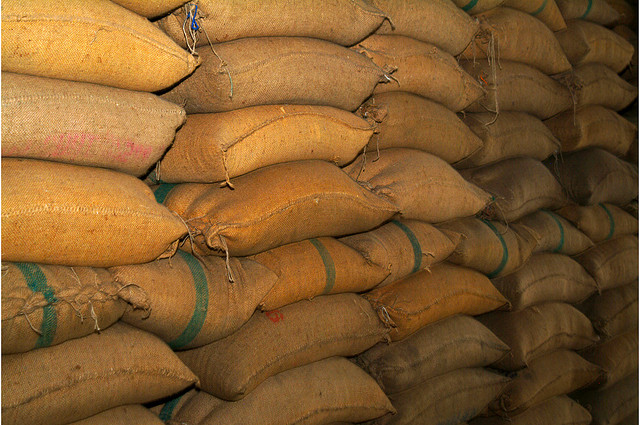
9. Computer: Information can be stored and retrieved from computer and its accessories such as hard disc, flash drive.
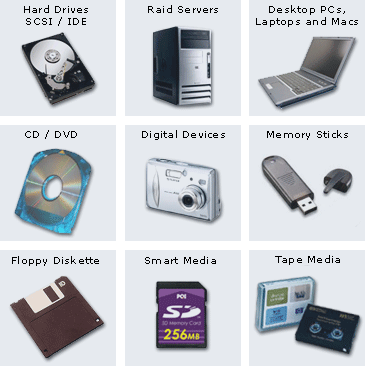
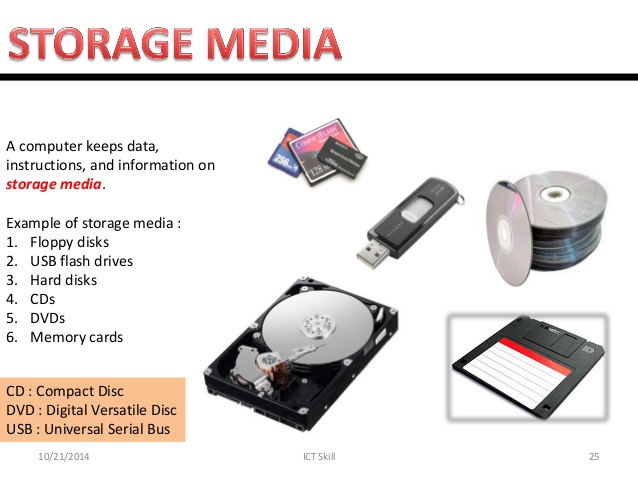
10. Depot: Liquid such as petrol, diesel and kerosene are stored in a large tanks in a place called depot so also are fuel stations.
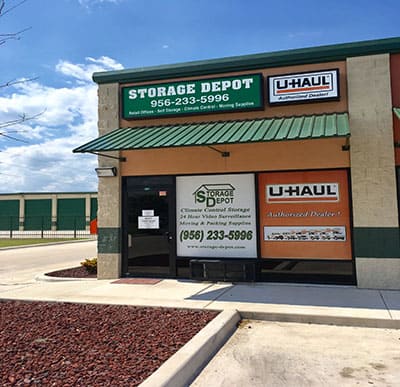
THINGS WE STORE
1. Cereals and legumes such as beans, maize, rice, etc.
2. Perishable items e.g. meat, vegetables, fruits, etc.
3. Manufactured products such as cement and fertilizers.
4. Liquids such as oil, water, etc.
5. Information are stored in computer.
6. Publications in form of books, magazines are stored in the library and shelves.
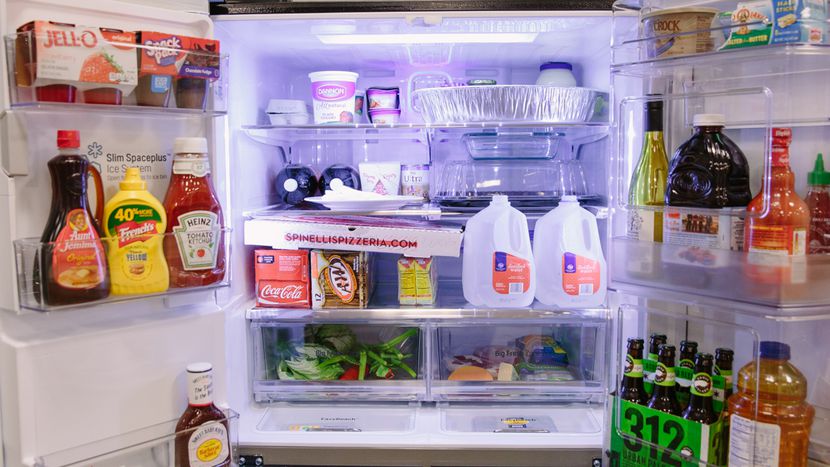
REASONS FOR STORING THINGS PROPERLY
1. Perishable items such as meat, fruit, etc are stored in the refrigerator or deep freezer to prevent them from being spoilt.
2. Goods such as agricultural products are stored during season so as to make them
available when they are out of season.
3. Goods are purchased in bulk so as to reduce cost and this has to be stored for future use.
4. Imported and manufactured goods are stored in warehouse before being distributed to wholesalers and retailers.
5. Agricultural seeds are stored so as to plant them during the planting season.
https://drive.google.com/file/d/1Q8IEn0 ... sp=sharing
Evaluation:
1. Define Storage.
2. List four ways of storing things
3. Give four reasons for storing properly.
4. Mention five things we store.
READING ASSIGNMENT: - Read chapter 16 of Solakat Social studies for Junior Secondary School Volume two by A. Oluwasola Oyewole pages 65-66.
ASSIGNMENT
OBJECTIVE QUESTIONS
1. The process of keeping things for future use is known as …………….
a. saving b. storing c. safety d. security.
2. Preservation is the way of ………….. food item so that it remains in good condition for a long period of time.
a. nursing b. tending c. caring d. storing
3. All but one of the following are ways of storing things.
a. Bagging b. Warehouse c. Silos d. Security
4. Which of the following is used to store yam in rural areas?
a. Silos b. Barns c. Rhombus. d. Can.
5. Cereals like maize are stored in
a. refrigerator. b. silos c. rhombus d. B & C
TOPIC: STORAGE
CONTENT: 1. Meaning of storage
2. Ways of storing things
3. Things we store
4. Reasons for storing things properly
MEANING OF STORAGE
Storage is the process of keeping things for future use. It involves keeping and preserving in safe condition and suitable facility for use.
For effective storage, most of the products need to be preserved before storage. Preservation is the way of caring or treating food item so that it remains in good condition for a long period of time.
Some of the ways of preserving our products include:
1. Drying e.g. agricultural products such as Cocoa, Maize.
2. By adding chemicals to the products.

WAYS OF STORING THINGS
1. Warehouse: A warehouse is a special building in which certain goods are kept before being distributed to the users.

2. Shops: A shop is where commodities are kept before being purchased by consumers. Examples include provision stores that sell goods such as Bournvita, Biro, Sweets, etc.

3. Food store: This is often part of the kitchen in which food items such as beans, yam, oil, etc. are kept. Other form of food stores are storage cupboards, cabinets and shelves.

4. Refrigerator/Freezer: These are electrical appliances in which perishable items such as frozen food like fish, vegetables, fruits, etc are kept for preservation.

5. Silos: This is the scientific way of storing grains in large quantity. Silos which may be cylindrical or rectangular in shape are made from aluminum, plywood, rubber or steel. Silos are always air tight. Grains or cereal to be stored in a silos must be dried.

6. Barns: This is most traditional form of storing yams in Nigeria. A barn is made up of wood vertically and horizontally arranged to hold the yams. The yams are often spaced from each other and tied with strings to the wood.

7. Cribs: Cribs are used for storing cereal especially guinea corn and maize during the dry season. Maize cobs are harvested when they are still wet and stored in the cribs. They are provided with adequate ventilation that helps to dry up the cobs. It also helps in controlling insect and rodent attack.

8. Bagging: Products such as maize, beans, sugar, flour etc are kept inside bag before they are stored in a place. This is called Bagging.

9. Computer: Information can be stored and retrieved from computer and its accessories such as hard disc, flash drive.


10. Depot: Liquid such as petrol, diesel and kerosene are stored in a large tanks in a place called depot so also are fuel stations.

THINGS WE STORE
1. Cereals and legumes such as beans, maize, rice, etc.
2. Perishable items e.g. meat, vegetables, fruits, etc.
3. Manufactured products such as cement and fertilizers.
4. Liquids such as oil, water, etc.
5. Information are stored in computer.
6. Publications in form of books, magazines are stored in the library and shelves.

REASONS FOR STORING THINGS PROPERLY
1. Perishable items such as meat, fruit, etc are stored in the refrigerator or deep freezer to prevent them from being spoilt.
2. Goods such as agricultural products are stored during season so as to make them
available when they are out of season.
3. Goods are purchased in bulk so as to reduce cost and this has to be stored for future use.
4. Imported and manufactured goods are stored in warehouse before being distributed to wholesalers and retailers.
5. Agricultural seeds are stored so as to plant them during the planting season.
https://drive.google.com/file/d/1Q8IEn0 ... sp=sharing
Evaluation:
1. Define Storage.
2. List four ways of storing things
3. Give four reasons for storing properly.
4. Mention five things we store.
READING ASSIGNMENT: - Read chapter 16 of Solakat Social studies for Junior Secondary School Volume two by A. Oluwasola Oyewole pages 65-66.
ASSIGNMENT
OBJECTIVE QUESTIONS
1. The process of keeping things for future use is known as …………….
a. saving b. storing c. safety d. security.
2. Preservation is the way of ………….. food item so that it remains in good condition for a long period of time.
a. nursing b. tending c. caring d. storing
3. All but one of the following are ways of storing things.
a. Bagging b. Warehouse c. Silos d. Security
4. Which of the following is used to store yam in rural areas?
a. Silos b. Barns c. Rhombus. d. Can.
5. Cereals like maize are stored in
a. refrigerator. b. silos c. rhombus d. B & C
WEEK 3
LESSON 4
TOPIC: SAVINGS AND WAYS OF SAVING
CONTENT: 1. Meaning of Saving
2. Reasons for saving
3. Ways of Saving in the past
4. Modern ways of saving
MEANING OF SAVING
Savings is a way of keeping our valuable items such as money as money, jewels in a safe place. The institution that keeps money and other valuables include Bank, Co-operative societies, Stock Exchange and other financial institution.

REASONS FOR SAVING
1. For Future Use: People save money to meet certain demands in the future such as Marriage, building of houses, paying of school fees, etc.
2. For Solving Unexpected Problem: People save so as to meet unexpected and unforeseen problem that may involve a lot of expenditure such as illness, burial ceremony, etc.
3. For future Investment: Investment is the act of spending money on a business in order to get more money. A person may invest in bakery, transport, poultry, building of schools etc. People may save install-mentally to get the money needed for such investment.
4. For Security: People save money in Banks, Cooperative societies, etc so as to ensure the safety of the money from thieves.
5. To Regulate Spending: People save money in order to avoid reckless spending. It is easier to spend money at hand than the one kept in Banks or Co-operative societies.
6. To Secure loan: People save in the Banks and Cooperative Societies so as to be able to get loan to meet certain needs that are above their financial capacity.
7. To earn interest: People kept money in the banks especially saving account in order to earn interest. No interest is paid on current account.

Evaluation:
1. Define savings.
2. Mention two things we can save.
3. Give three reasons for savings.
LESSON 5
WAYS OF SAVING IN THE PAST
1. Pots: Money was kept inside a pot that is made of clay or gourds that is got from a tree.
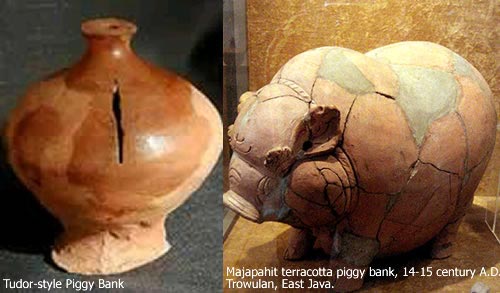
2. Ground: Some kept their money in a container and then dig the ground and bury it.

3. Relation: Some kept their money with close and trusted relations.
4. Money Keepers: Some people are professional money keepers. They kept money for people and give loan to those who are in need.
5. Pillow: Money was kept under pillow and at hidden place of the house.
6. Roof: In the olden days, people kept money under the roof of the house.
7. Saving Box: This is made up of wood or mud with a passage hole in it. Money kept inside cannot be taken unless the box is broken.
8. “Esusu”: People working or living together often come together to contribute money on daily, weekly or monthly basic until it goes round the members.
MODERN WAYS OF SAVINGS
1. Banks: As noted earlier banks are the most popular ways of keeping money
money. Banks collect deposit and give loans to its customers.

2. Non-Banking Financial Institution:
Non-banking financial institutions in modern day include Insurance companies and Unit Trust. People pay money in order to secure their properties and the companies pay back in time of loss or accident.

3. Co-operative Society: Another way of saving money is through Co-operative society. People working in an organization or living in a community often come together to form the association that takes money from members and give them loans. Most of the Co-operative, Thrift and Credit Societies are registered by government. Unlike “Esusu”, members cannot collect their savings as long as they remain members of the association.
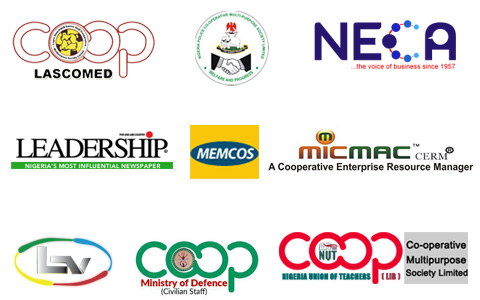
4. Buying of Stock(shares): Another way by which savings are made by people is through the purchase of shares or stock from quoted companies. They turn collect dividends on such shares and they could sell it in times of need.

EVALUATION
1. List three ways of savings in the past.
2. Explain three modern ways of savings.
READING ASSIGNMENT: - Read chapter 16 of Solakat Social studies for Junior Secondary School Volume two by A. Oluwasola Oyewole pages 66-68
ASSIGNMENT
OBJECTIVE QUESTION
1. Which of the following is NOT a traditional way of savings money?
a. Inside the soil b. Under the roof c. In the Bank d. In a saving box.
2. A kind of savings in which each member of the group collects the total amount saved by the group in turn is called………
a. Security b. Esusu c. Trust d. Insurance.
3. All but one of the following are examples of Non-banking financial institutions.
a. Unit Trust b. Insurance c. Co-operative Society d. Central Bank.
TOPIC: SAVINGS AND WAYS OF SAVING
CONTENT: 1. Meaning of Saving
2. Reasons for saving
3. Ways of Saving in the past
4. Modern ways of saving
MEANING OF SAVING
Savings is a way of keeping our valuable items such as money as money, jewels in a safe place. The institution that keeps money and other valuables include Bank, Co-operative societies, Stock Exchange and other financial institution.

REASONS FOR SAVING
1. For Future Use: People save money to meet certain demands in the future such as Marriage, building of houses, paying of school fees, etc.
2. For Solving Unexpected Problem: People save so as to meet unexpected and unforeseen problem that may involve a lot of expenditure such as illness, burial ceremony, etc.
3. For future Investment: Investment is the act of spending money on a business in order to get more money. A person may invest in bakery, transport, poultry, building of schools etc. People may save install-mentally to get the money needed for such investment.
4. For Security: People save money in Banks, Cooperative societies, etc so as to ensure the safety of the money from thieves.
5. To Regulate Spending: People save money in order to avoid reckless spending. It is easier to spend money at hand than the one kept in Banks or Co-operative societies.
6. To Secure loan: People save in the Banks and Cooperative Societies so as to be able to get loan to meet certain needs that are above their financial capacity.
7. To earn interest: People kept money in the banks especially saving account in order to earn interest. No interest is paid on current account.

Evaluation:
1. Define savings.
2. Mention two things we can save.
3. Give three reasons for savings.
LESSON 5
WAYS OF SAVING IN THE PAST
1. Pots: Money was kept inside a pot that is made of clay or gourds that is got from a tree.

2. Ground: Some kept their money in a container and then dig the ground and bury it.

3. Relation: Some kept their money with close and trusted relations.
4. Money Keepers: Some people are professional money keepers. They kept money for people and give loan to those who are in need.
5. Pillow: Money was kept under pillow and at hidden place of the house.
6. Roof: In the olden days, people kept money under the roof of the house.
7. Saving Box: This is made up of wood or mud with a passage hole in it. Money kept inside cannot be taken unless the box is broken.
8. “Esusu”: People working or living together often come together to contribute money on daily, weekly or monthly basic until it goes round the members.
MODERN WAYS OF SAVINGS
1. Banks: As noted earlier banks are the most popular ways of keeping money
money. Banks collect deposit and give loans to its customers.

2. Non-Banking Financial Institution:
Non-banking financial institutions in modern day include Insurance companies and Unit Trust. People pay money in order to secure their properties and the companies pay back in time of loss or accident.

3. Co-operative Society: Another way of saving money is through Co-operative society. People working in an organization or living in a community often come together to form the association that takes money from members and give them loans. Most of the Co-operative, Thrift and Credit Societies are registered by government. Unlike “Esusu”, members cannot collect their savings as long as they remain members of the association.

4. Buying of Stock(shares): Another way by which savings are made by people is through the purchase of shares or stock from quoted companies. They turn collect dividends on such shares and they could sell it in times of need.

EVALUATION
1. List three ways of savings in the past.
2. Explain three modern ways of savings.
READING ASSIGNMENT: - Read chapter 16 of Solakat Social studies for Junior Secondary School Volume two by A. Oluwasola Oyewole pages 66-68
ASSIGNMENT
OBJECTIVE QUESTION
1. Which of the following is NOT a traditional way of savings money?
a. Inside the soil b. Under the roof c. In the Bank d. In a saving box.
2. A kind of savings in which each member of the group collects the total amount saved by the group in turn is called………
a. Security b. Esusu c. Trust d. Insurance.
3. All but one of the following are examples of Non-banking financial institutions.
a. Unit Trust b. Insurance c. Co-operative Society d. Central Bank.
WEEK 4
LESSON 6
TOPIC: KEEPING MONEY IN THE BANK
CONTENT:
(a) Meaning and types of Banks
(b) Advantages of keeping money in the Bank
(c) Problems associated with saving money in the Bank
(d) Solutions.
MEANING OF BANK
Bank is an organization that keeps and lend money and provide other financial banks. those who maintain savings account are given passbook and earn interest on the money saved. Those who operate current account use cheque and pay some money for services rendered by the bank. Modern banks originated from the acts of Goldsmith that kept gold and other valuables for people in Britain.
Types of Banks In Nigeria
1. Central Bank: This is the highest bank in Nigeria. It prints our currency and mints our coins. It controls and serves as bank to other banks. It also keeps the account of federal government.
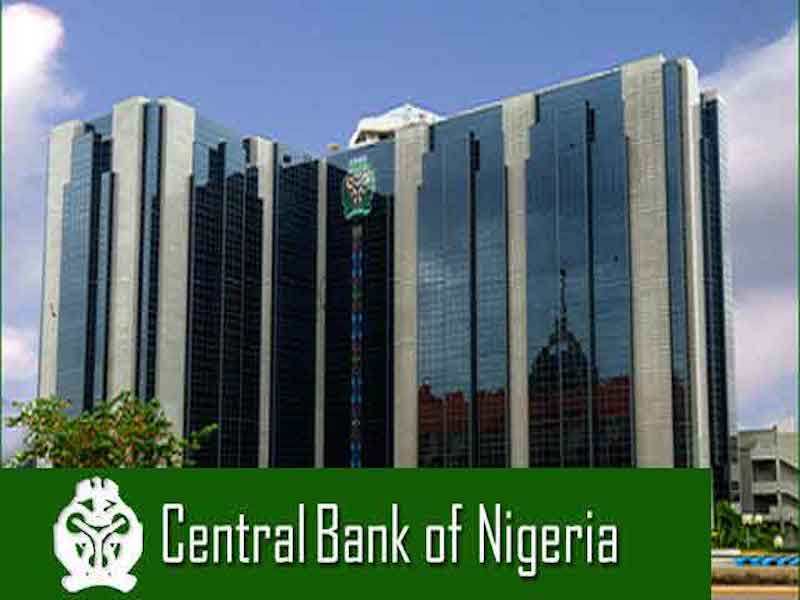
2. Commercial Banks: are financial institutions which carry out retail banking services. It keeps and lend money to customers to make profit. They are owned by individuals and groups. Examples are First Bank, Guarantee Trust Bank, Diamond Bank, Zenith Bank, etc.
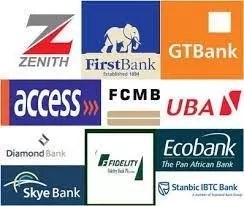
3. Mortgage Banks receive deposit and give loans to those who want to build houses or buy land.
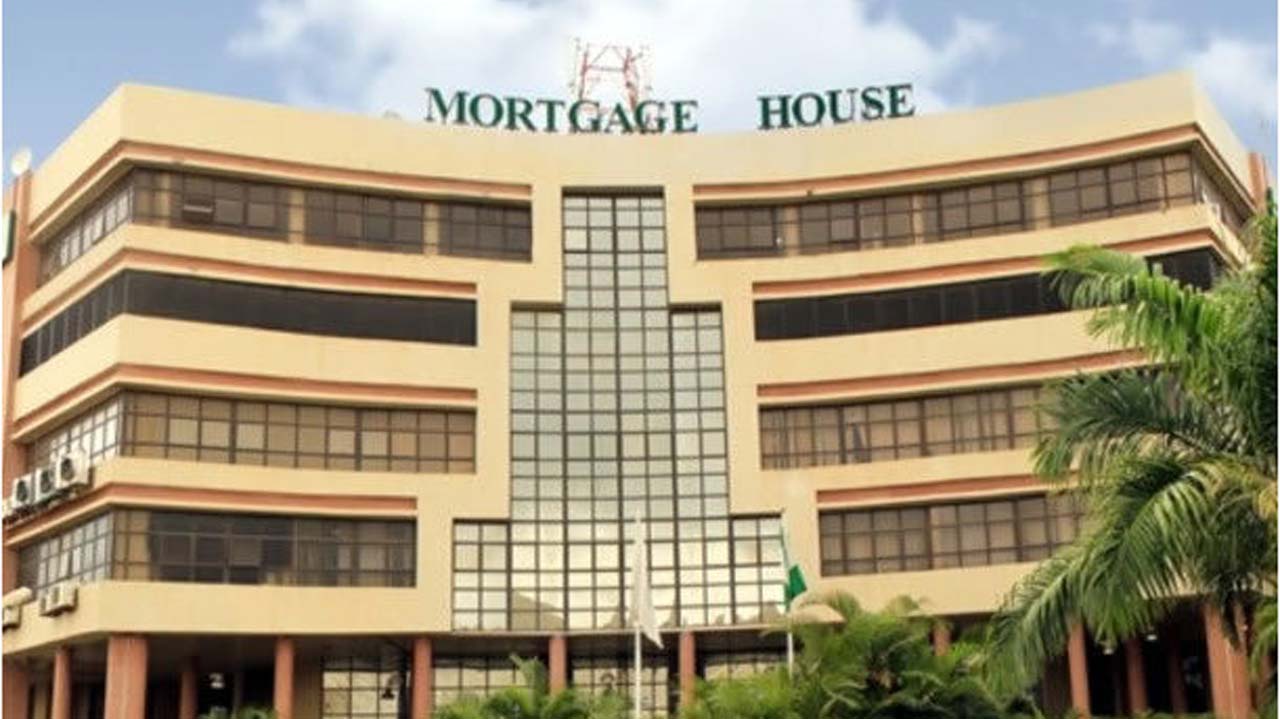
4. Merchant Banks provide medium and long term loans, accepts large deposits, Bills and deals in stocks. It deals with traders.
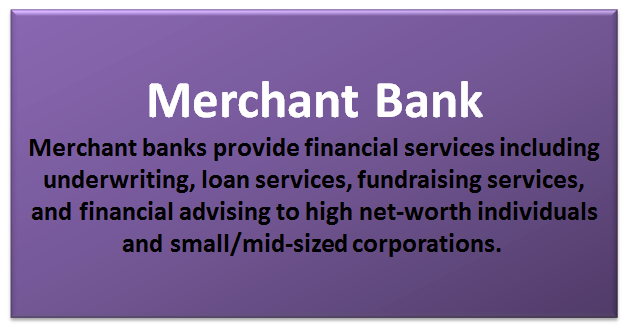
Advantages of keeping money in the Banks
1. Security: Keeping our money in the Banks ensures the security of the money. Such money cannot be stolen by thieves.
2. To avoid reckless spending: People keep money in banks to avoid reckless spending. Money kept at hand is easier to spend than those kept in the banks.
3. Easy withdrawal: Unlike selling of shares in quoted companies, money kept in banks can easily be withdrawn whenever the depositors need it.
Withdrawing Money at a Bank

A customer withdraws money at a commercial bank.
4. Privacy: Keeping money in the banks ensure privacy of the amount of money a person has unless the person shows another person his bank document.
5. Loan: Keeping money in the bank is one of the conditions that is required be-fore a person could get loan from bank. A loan is an amount of money that is above the amount saved in the bank borrowed by a person in order to finance a project.
PROBLEMS ASSOCIATED WITH SAVING MONEY IN THE BANK
1. Conditions for saving: Banks often demands for certain conditions that cannot be easily met by the intending customer. Such conditions include National Identity Card, Drivers License, Power Holding Company of Nigeria Bill, High Initial Deposit, etc.
2. Illiteracy and ignorance hinders many people from saving in the bank.
3. Error in documentation while opening the Account and when writing a request for withdrawal is another problem of saving money in the bank.
4. Non-availability in rural areas: Banks are concentrated in urban areas thereby depriving the rural dwellers from saving in the banks.
5. Fraud: Fraud committed by bank officials often lead to the collapse of the bank and loss of savings by depositors. Some fraudsters also steal people’s money through Automated Teller Machine (ATM).
6. Poverty: Many people earn from hand to mouth. This prevent them from saving money in the banks.
SOLUTIONS
1. Education: People should be properly educated on the importance of saving money in the bank.
2. Modern gadgets such as Automated Teller Machine has reduced some of the problems like difficulty in withdrawal of money.
3. Services: Banks officials should render quality services to their customers.
4. Patience: Depositors should be patient while filling banks document so also are bank officials in order to prevent error in documentation.
5. Humility and courtesy are essential attributes that a banker must possess in order to serve the customers.
6. Hardworking: People should work hard so as to earn enough money to take care of their needs and get surplus to be kept in banks.
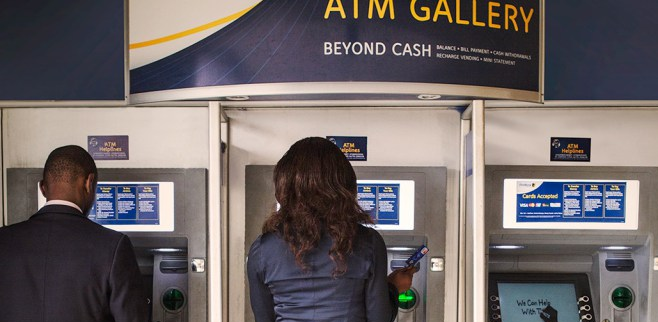
Automated Teller Machine
EVALUATION
1. List two problems associated with keeping money in the bank.
2. Suggest three solutions to the problems of keeping money in the bank.
READING ASSIGNMENT: - Read chapter 17 of Solakat Social studies for Junior Secondary School Volume two by A. Oluwasola Oyewole pages 68 – 71.
ASSIGNMENT
OBJECTIVE QUESTION
1. The word ATM stands for ..................
a. Accelerated Telecommunication Movies. b. Association of Technicians
and Merchants. c. Assistant Telecommunication Machine.
d. Automated Teller Machine.
2. Modern Banks originates from the acts of …………..
a. hunters. b. money collectors. c. rich men. d. goldsmith
3. One of the following is NOT the function of the Central Bank.
a. Printing of currency b. Serves as bank to other banks.
c. Keeps the account of federal government.
d. Accept deposit from people.
4. Which of the following is NOT problem associated with keeping money in the bank
a. Illiteracy b. Easy withdrawal. C. Fraud. D. poverty.
5. The followings are solutions to Banking problems EXCEPT
a. Education. B. modern gadgets c. Hard working d. Loans
TOPIC: KEEPING MONEY IN THE BANK
CONTENT:
(a) Meaning and types of Banks
(b) Advantages of keeping money in the Bank
(c) Problems associated with saving money in the Bank
(d) Solutions.
MEANING OF BANK
Bank is an organization that keeps and lend money and provide other financial banks. those who maintain savings account are given passbook and earn interest on the money saved. Those who operate current account use cheque and pay some money for services rendered by the bank. Modern banks originated from the acts of Goldsmith that kept gold and other valuables for people in Britain.
Types of Banks In Nigeria
1. Central Bank: This is the highest bank in Nigeria. It prints our currency and mints our coins. It controls and serves as bank to other banks. It also keeps the account of federal government.

2. Commercial Banks: are financial institutions which carry out retail banking services. It keeps and lend money to customers to make profit. They are owned by individuals and groups. Examples are First Bank, Guarantee Trust Bank, Diamond Bank, Zenith Bank, etc.

3. Mortgage Banks receive deposit and give loans to those who want to build houses or buy land.

4. Merchant Banks provide medium and long term loans, accepts large deposits, Bills and deals in stocks. It deals with traders.

Advantages of keeping money in the Banks
1. Security: Keeping our money in the Banks ensures the security of the money. Such money cannot be stolen by thieves.
2. To avoid reckless spending: People keep money in banks to avoid reckless spending. Money kept at hand is easier to spend than those kept in the banks.
3. Easy withdrawal: Unlike selling of shares in quoted companies, money kept in banks can easily be withdrawn whenever the depositors need it.
Withdrawing Money at a Bank

A customer withdraws money at a commercial bank.
4. Privacy: Keeping money in the banks ensure privacy of the amount of money a person has unless the person shows another person his bank document.
5. Loan: Keeping money in the bank is one of the conditions that is required be-fore a person could get loan from bank. A loan is an amount of money that is above the amount saved in the bank borrowed by a person in order to finance a project.
PROBLEMS ASSOCIATED WITH SAVING MONEY IN THE BANK
1. Conditions for saving: Banks often demands for certain conditions that cannot be easily met by the intending customer. Such conditions include National Identity Card, Drivers License, Power Holding Company of Nigeria Bill, High Initial Deposit, etc.
2. Illiteracy and ignorance hinders many people from saving in the bank.
3. Error in documentation while opening the Account and when writing a request for withdrawal is another problem of saving money in the bank.
4. Non-availability in rural areas: Banks are concentrated in urban areas thereby depriving the rural dwellers from saving in the banks.
5. Fraud: Fraud committed by bank officials often lead to the collapse of the bank and loss of savings by depositors. Some fraudsters also steal people’s money through Automated Teller Machine (ATM).
6. Poverty: Many people earn from hand to mouth. This prevent them from saving money in the banks.
SOLUTIONS
1. Education: People should be properly educated on the importance of saving money in the bank.
2. Modern gadgets such as Automated Teller Machine has reduced some of the problems like difficulty in withdrawal of money.
3. Services: Banks officials should render quality services to their customers.
4. Patience: Depositors should be patient while filling banks document so also are bank officials in order to prevent error in documentation.
5. Humility and courtesy are essential attributes that a banker must possess in order to serve the customers.
6. Hardworking: People should work hard so as to earn enough money to take care of their needs and get surplus to be kept in banks.

Automated Teller Machine
EVALUATION
1. List two problems associated with keeping money in the bank.
2. Suggest three solutions to the problems of keeping money in the bank.
READING ASSIGNMENT: - Read chapter 17 of Solakat Social studies for Junior Secondary School Volume two by A. Oluwasola Oyewole pages 68 – 71.
ASSIGNMENT
OBJECTIVE QUESTION
1. The word ATM stands for ..................
a. Accelerated Telecommunication Movies. b. Association of Technicians
and Merchants. c. Assistant Telecommunication Machine.
d. Automated Teller Machine.
2. Modern Banks originates from the acts of …………..
a. hunters. b. money collectors. c. rich men. d. goldsmith
3. One of the following is NOT the function of the Central Bank.
a. Printing of currency b. Serves as bank to other banks.
c. Keeps the account of federal government.
d. Accept deposit from people.
4. Which of the following is NOT problem associated with keeping money in the bank
a. Illiteracy b. Easy withdrawal. C. Fraud. D. poverty.
5. The followings are solutions to Banking problems EXCEPT
a. Education. B. modern gadgets c. Hard working d. Loans
WEEK 5
LESSON 7
TOPIC: RESOURCES
CONTENT
(a) Meaning of resources.
(b) Examples of resources.
(c) Uses of raw materials.
MEANING OF RESOURCES
Resources are means of producing goods and services. Different resources are combined to produce different goods and services. Resources are those things that we need for production.

EXAMPLES OF RESOURCES
1. Human resources
2. Natural resources
3. Raw materials
4. Equipment
5. Money
Human Resources
Human resources refers to country’s manpower both in terms of quantity and availability of labour. Labour can be defined as mental and physical efforts of man in the production of goods and services. The potential labour force refers to the number of people who are capable and willing to work. The effective size of labour force refers to those who are gainfully employed in the economy.
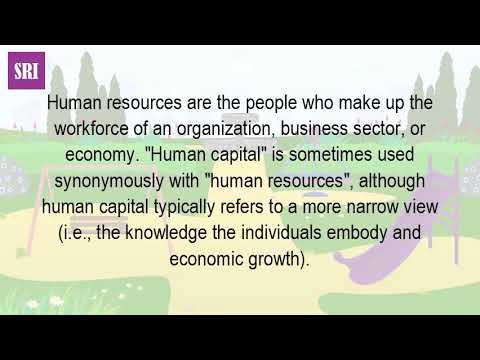
Natural Resources
They are often refer to as gifts of nature. Examples are soil, air, ocean, rivers vegetation, etc.
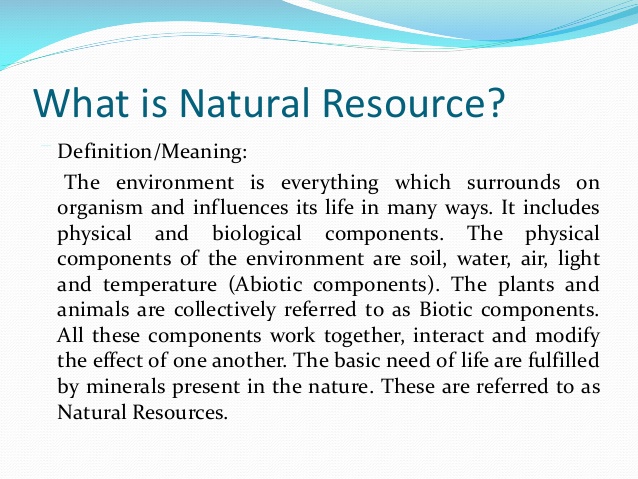
Mineral Resources
This is part of natural resources that are found naturally in a place. Nigeria is rich in mineral resources such as oil, columbite, lignite, lead, coal, gold and iron. These minerals are used for production of other goods. For instance, kerosene, diesel and petrol are derived from crude oil.

Coal
Coal is a black rock made up of the element carbon. When coal burns, it releases a large amount of energy as heat. Coal is used to fuel power plants that produce electricity.
https://www.slideshare.net/spentamainyu ... -meghalaya
IMPORTANCE OF MINERAL RESOURCES TO NIGERIAN ECONOMY
1. Mineral resources especially crude oil provides about 90% of the total foreign Exchange recorded by Nigeria.
2. They provide employment for foreigners and Nigerians alike.
3. They serve as raw materials in some industries e.g. limestone is used to produce Cement.
4. They help in the development of infrastructural facilities in Nigeria.
5. They attract foreign investors to Nigeria.

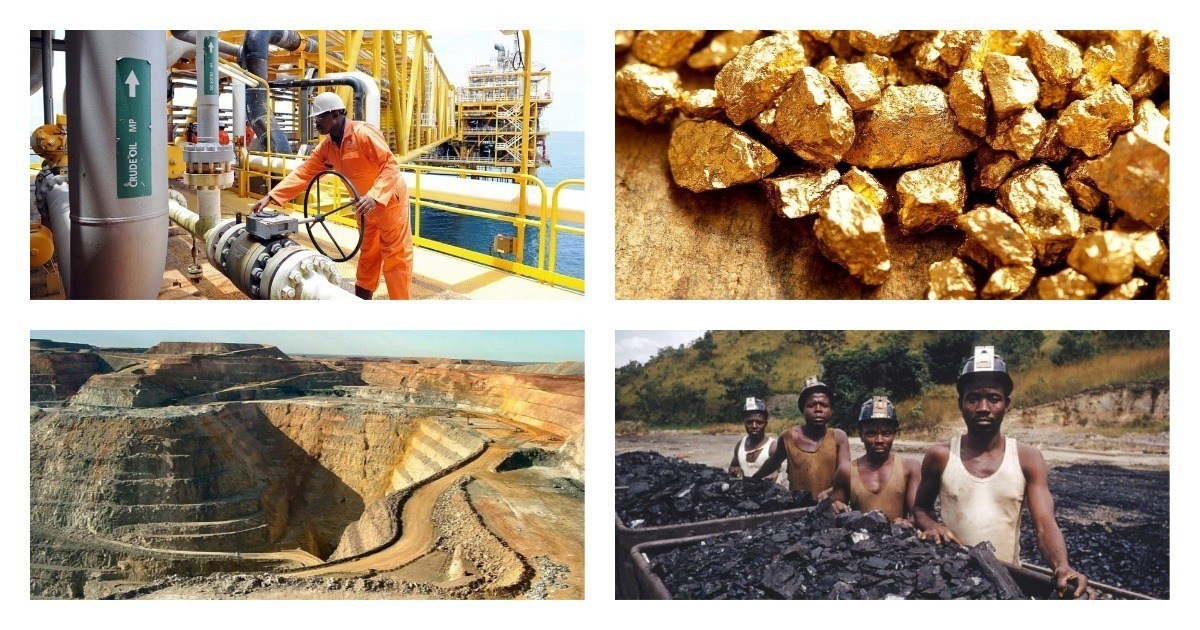
Equipment: are necessary items i.e. the tools, clothing, or other items needed for a particular activity or purpose.
Raw Materials
Raw materials are those goods that are combined to produce finished or semi finished products.
Uses of some raw materials
Raw materials ----- Finished products
Crude oil ----- Diesel, Kerosene and petrol
Cocoa ----- Chocolate, Bournvita
Groundnut ----- Groundnut oil
Cotton ----- Clothes
Sugarcane ----- Sugar
Sisal ----- Ropes
Zinc ----- Pipes
Uses/ Importance of Resources
1. Resources are combined to produce other goods.
2. The exploration and exploitation of resources provide employment for the people
3. Some of them such as crude oil provides foreign exchange for Nigeria.
4. Availability of resources promotes industrialization of the society.
https://drive.google.com/file/d/1CkLrc5 ... sp=sharing
Further Studies
Evaluation
1. Define resources.
2. Mention four types of resources.
3. List Two importance of mineral resources to Nigerian economy.
READING ASSIGNMENT: - Read chapter 18 of Solakat Social studies for Junior Secondary School Volume two by A. Oluwasola Oyewole pages 71-73
ASSIGNMENT
OBJECTIVE QUESTION
1. The means of producing goods and services is known as …………..
a. Renewal. b. Resources. c. Renewable. d. Sources.
2. Natural resources are often refer to as gift of …………….
a. nature b. earth. C. heaven d. ground.
3. The mineral resources that provides the highest total of foreign exchange in Nigeria is ………….. a. Coal b. Crude oil. c. Columbite. d. Lead.
4. …………….. resources refers to country’s manpower both in terms of quantity and availability of labour.
a. Mineral b. Natural c. Energy d. Human
TOPIC: RESOURCES
CONTENT
(a) Meaning of resources.
(b) Examples of resources.
(c) Uses of raw materials.
MEANING OF RESOURCES
Resources are means of producing goods and services. Different resources are combined to produce different goods and services. Resources are those things that we need for production.

EXAMPLES OF RESOURCES
1. Human resources
2. Natural resources
3. Raw materials
4. Equipment
5. Money
Human Resources
Human resources refers to country’s manpower both in terms of quantity and availability of labour. Labour can be defined as mental and physical efforts of man in the production of goods and services. The potential labour force refers to the number of people who are capable and willing to work. The effective size of labour force refers to those who are gainfully employed in the economy.

Natural Resources
They are often refer to as gifts of nature. Examples are soil, air, ocean, rivers vegetation, etc.

Mineral Resources
This is part of natural resources that are found naturally in a place. Nigeria is rich in mineral resources such as oil, columbite, lignite, lead, coal, gold and iron. These minerals are used for production of other goods. For instance, kerosene, diesel and petrol are derived from crude oil.

Coal
Coal is a black rock made up of the element carbon. When coal burns, it releases a large amount of energy as heat. Coal is used to fuel power plants that produce electricity.
https://www.slideshare.net/spentamainyu ... -meghalaya
IMPORTANCE OF MINERAL RESOURCES TO NIGERIAN ECONOMY
1. Mineral resources especially crude oil provides about 90% of the total foreign Exchange recorded by Nigeria.
2. They provide employment for foreigners and Nigerians alike.
3. They serve as raw materials in some industries e.g. limestone is used to produce Cement.
4. They help in the development of infrastructural facilities in Nigeria.
5. They attract foreign investors to Nigeria.


Equipment: are necessary items i.e. the tools, clothing, or other items needed for a particular activity or purpose.
Raw Materials
Raw materials are those goods that are combined to produce finished or semi finished products.
Uses of some raw materials
Raw materials ----- Finished products
Crude oil ----- Diesel, Kerosene and petrol
Cocoa ----- Chocolate, Bournvita
Groundnut ----- Groundnut oil
Cotton ----- Clothes
Sugarcane ----- Sugar
Sisal ----- Ropes
Zinc ----- Pipes
Uses/ Importance of Resources
1. Resources are combined to produce other goods.
2. The exploration and exploitation of resources provide employment for the people
3. Some of them such as crude oil provides foreign exchange for Nigeria.
4. Availability of resources promotes industrialization of the society.
https://drive.google.com/file/d/1CkLrc5 ... sp=sharing
Further Studies
Evaluation
1. Define resources.
2. Mention four types of resources.
3. List Two importance of mineral resources to Nigerian economy.
READING ASSIGNMENT: - Read chapter 18 of Solakat Social studies for Junior Secondary School Volume two by A. Oluwasola Oyewole pages 71-73
ASSIGNMENT
OBJECTIVE QUESTION
1. The means of producing goods and services is known as …………..
a. Renewal. b. Resources. c. Renewable. d. Sources.
2. Natural resources are often refer to as gift of …………….
a. nature b. earth. C. heaven d. ground.
3. The mineral resources that provides the highest total of foreign exchange in Nigeria is ………….. a. Coal b. Crude oil. c. Columbite. d. Lead.
4. …………….. resources refers to country’s manpower both in terms of quantity and availability of labour.
a. Mineral b. Natural c. Energy d. Human
WEEK 6
LESSON 8
TOPIC: TRANSPORTATION
CONTENT:
(a) Meaning of transportation
(b) Olden days means of transportation
MEANING OF TRANSPORTATION
Transportation is the movement of people, goods and services from one place to another either by land air or water. Transportation in Nigeria is made up of the indigenous and modern means of transport. The indigenous means of transport is transport that has been in use before the introduction of the modern means of transport.
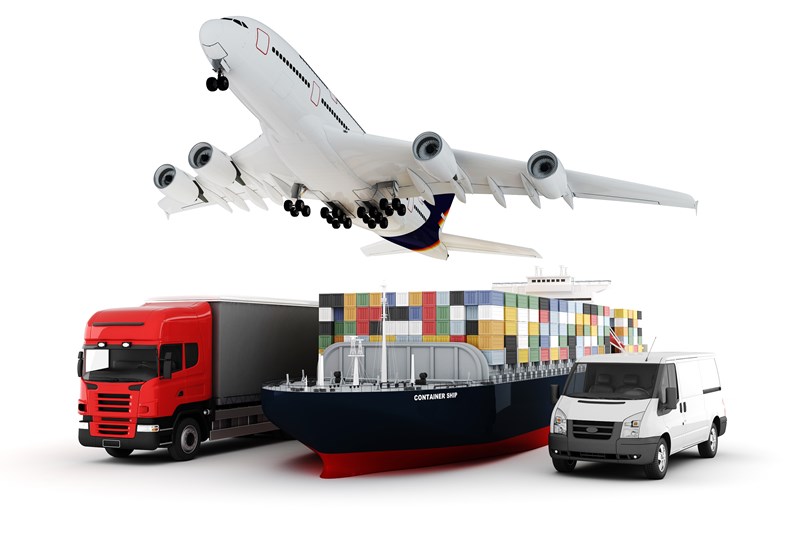
MODERN MEANS OF TRANSPORT
OLDEN DAYS MEANS OF TRANSPORTATION
1. Human Portage and Trekking
This is the oldest means of transport in Nigeria. This is a means of transport in which goods (loads), are carried by people either on their heads, shoulders or on their backs, with these loads the people walk on their feet to whatever destination they desire.
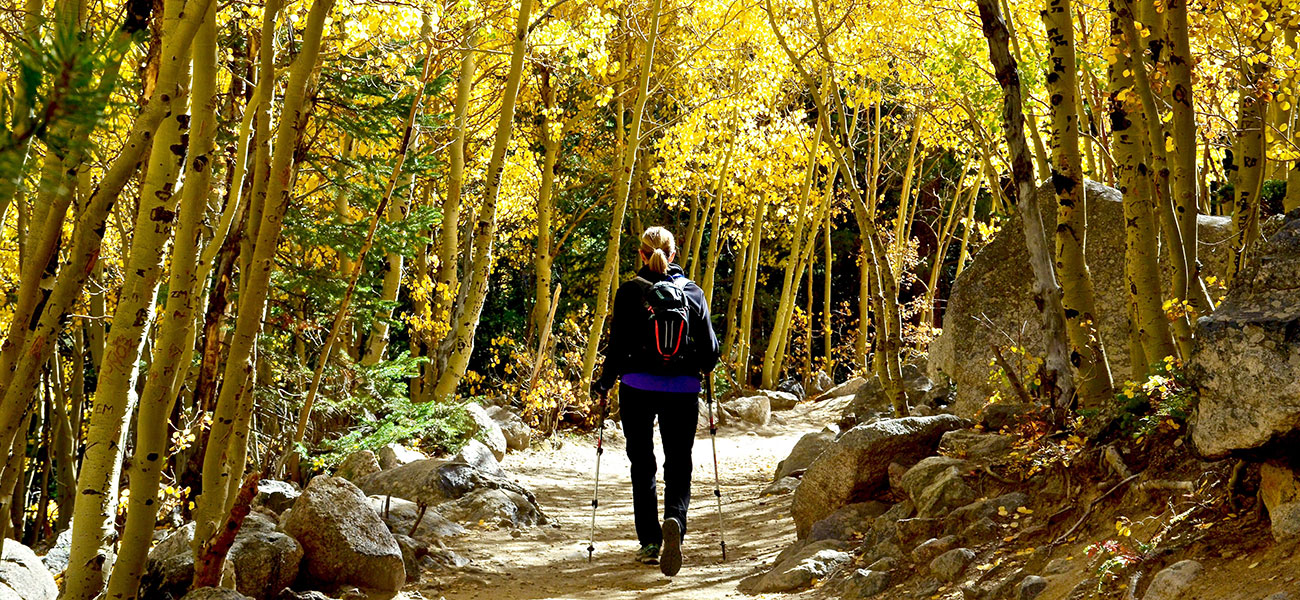
2. Beast of Burden
Sometimes people use some animals to carry their goods as well as human beings from one place to the other. The animals that are used for this purpose are called beast of burden. Examples of beast of burden are horses, camels, donkeys, oxen, mules, asses etc. The beast of burden is still very much in use in the interior of northern Nigeria today.
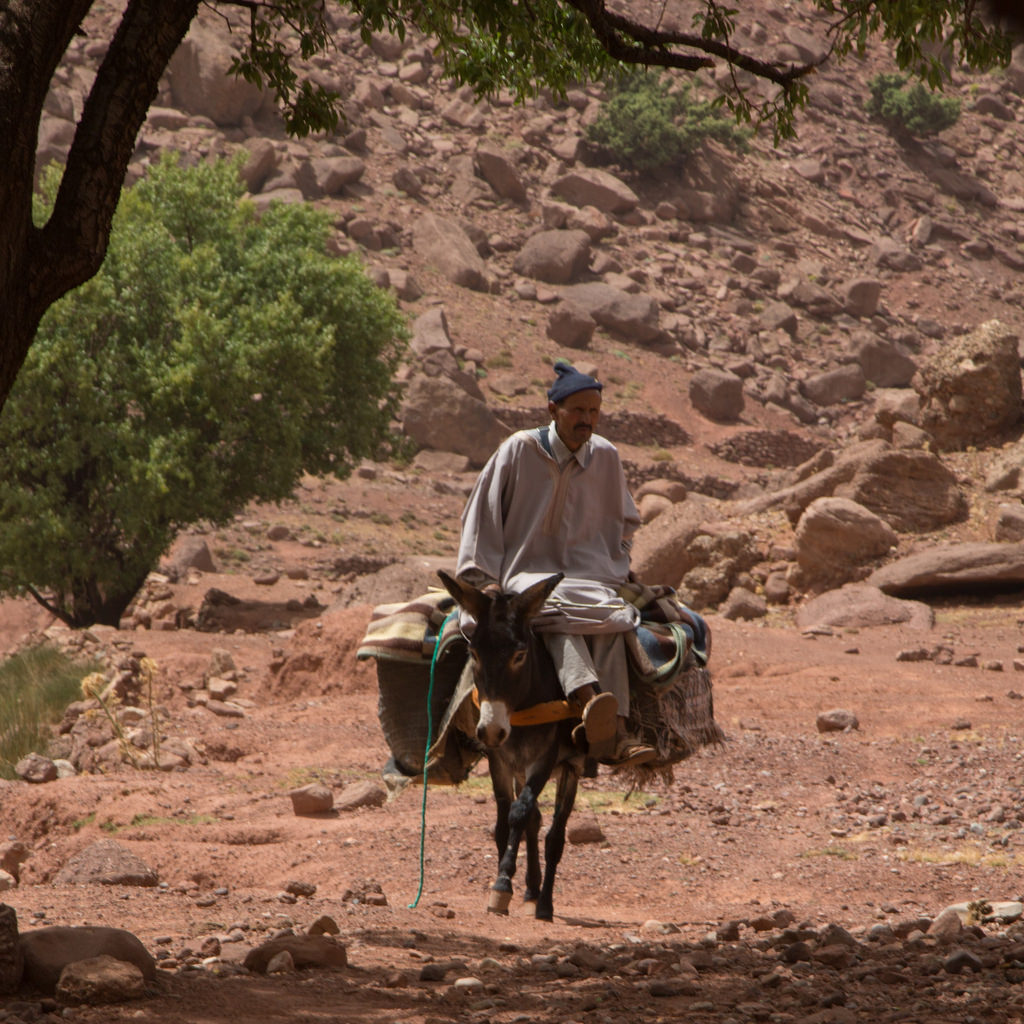
3. Canoes/Rafts
Canoes are old means of transport in the riverine areas of Nigeria. The canoes are carved out of the trunk of big trees. They were used and are still used to convey people and goods from one place to the other in the riverine areas of the country.
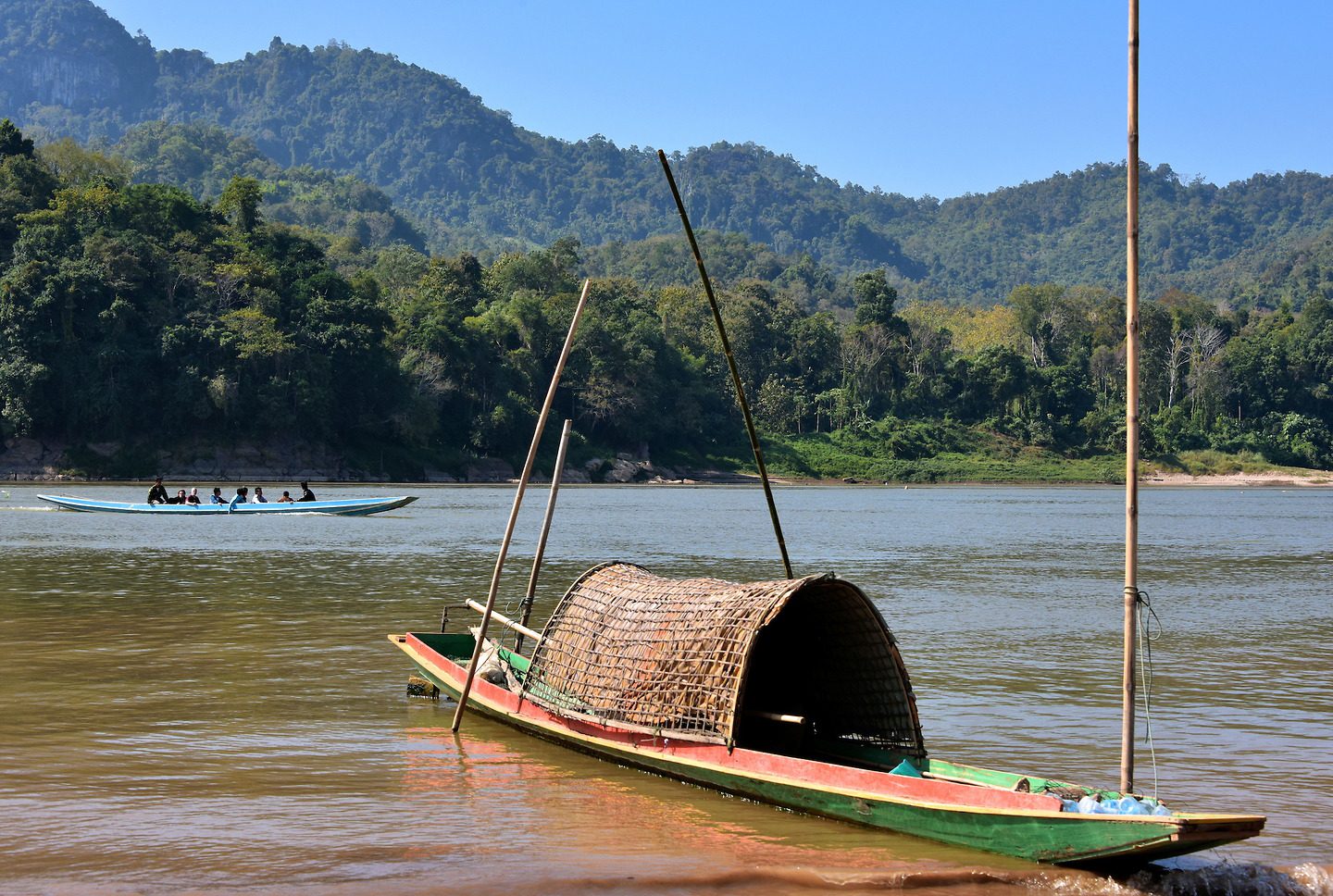

CANOES AS AN OLD MEANS OF TRANSPORT
Evaluation:
1. Explain the concept of transportation
2. Mention three means of transportation in the olden days.
LESSON 9
MODERN MEANS OF TRANSPORTATION
Modern system of transport started with the invention of steam engine between 1700 and 1825. Modern means of transportation in form of cars, lorries, railway, ships aeroplane was introduced to our country by the British who colonized
Types of Transport
The modern means of transport in Nigeria are as follows:
(a) Land: Roads and railways
(b) Water
(c) Air
(a) Land Transportation:
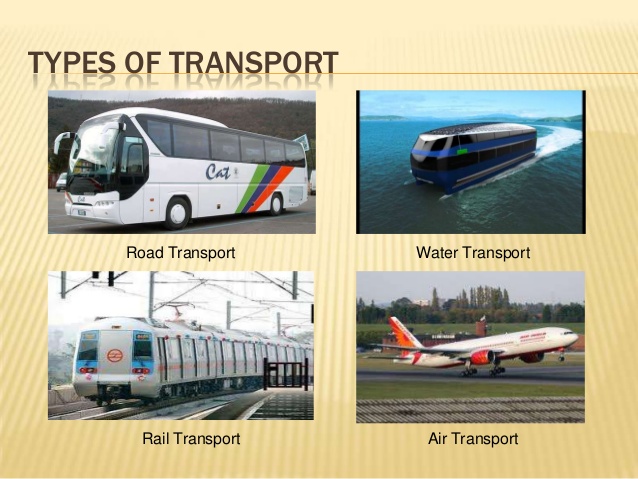
(1) Railway: This was built by colonial government first in1825 to facilitate import export trade in Nigeria. The first railway line started in Lagos in 1898 through Abeokuta to lbadan and was completed 1901. Today, the Nigeria railway system linked many important towns. Some of the states that are not served by railway are Akwa lbom, Delta, Edo, Cross Rivers, Ondo and Taraba States. The Nigeria Railway Corporation (NRC) was established on October 1st, 1955 to control the railway system.
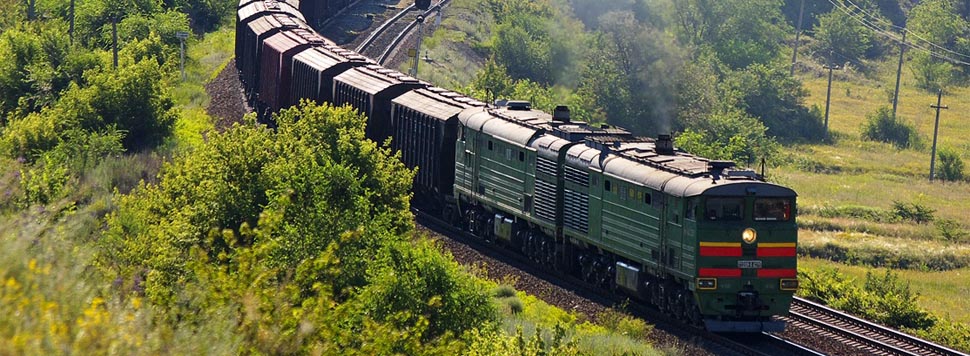
TRAIN AS A MODERN MEANS OF TRANSPORT
Merits of Railway
(1) It is safer than road transportation. Accident is not common.
(2) Railways charged a lower fee than any other forms transport.
(3) It is capable of carrying more loads and people than any other form of transportation
Demerits
1. Unlike in developed countries like Japan and Britain, Railway is the Slowest means of transportation in Nigeria.
2. It serves only a very few towns in Nigeria
3. It is very expensive to build.
(2) Road Transportation:
(a) Trunk “A” roads are constructed and maintained by the Federal Government. The link various towns cities of various states. An example is Lagos lbadan Express way which is a dual carriage way.
(b) Trunk “B’ roads are constructed and maintained by State Governments. They linked different towns, villages and cities together within a state.
(c) Trunk “C” roads are built and maintained by local Government Councils. Majority of them are laterite roads while some are tarred.
Merits
1. Road is cheaper to construct than railway
2. It complements all other forms of transportation. It takes you down to your destination.
3. It is faster than railway
4. It provides door to door services
Demerits
1. There is a high rate of accident on our roads.
2. Traffic congestion is a great problem of transportation in urban centres
3. Roads are difficult to construct on a rough topographies such as swamp and lagoon.

MODERN MEANS OF TRANSPORT BY ROADS
(b) Water Transportation
We have two types of water transportation. These are inland water ways and ocean navigation.
(i) Inland Water Ways: Before railways were built, the inland water ways on creeks, rivers and lagoons were the main routes by which the foreign traders from overseas reached the hinterland. These inland water ways are still being used by boat, canoe and ferry of various size.
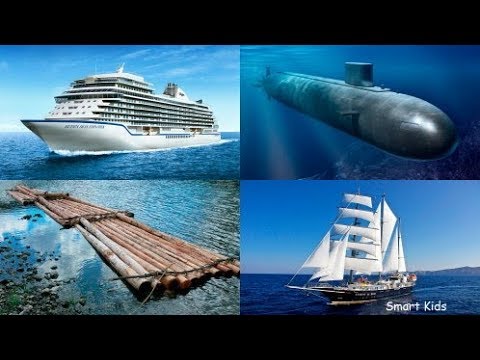
(ii) Ocean Water Ways: Very large ships, ocean liners, etc sail on the ocean carrying passengers, export and import goods to and from USA, Germany, Togo, Ghana, Australia, etc. The Nigerian Ports Authority which is now called Nigerian Port PLC was established in 1954. It owns and controls all port in Nigeria.
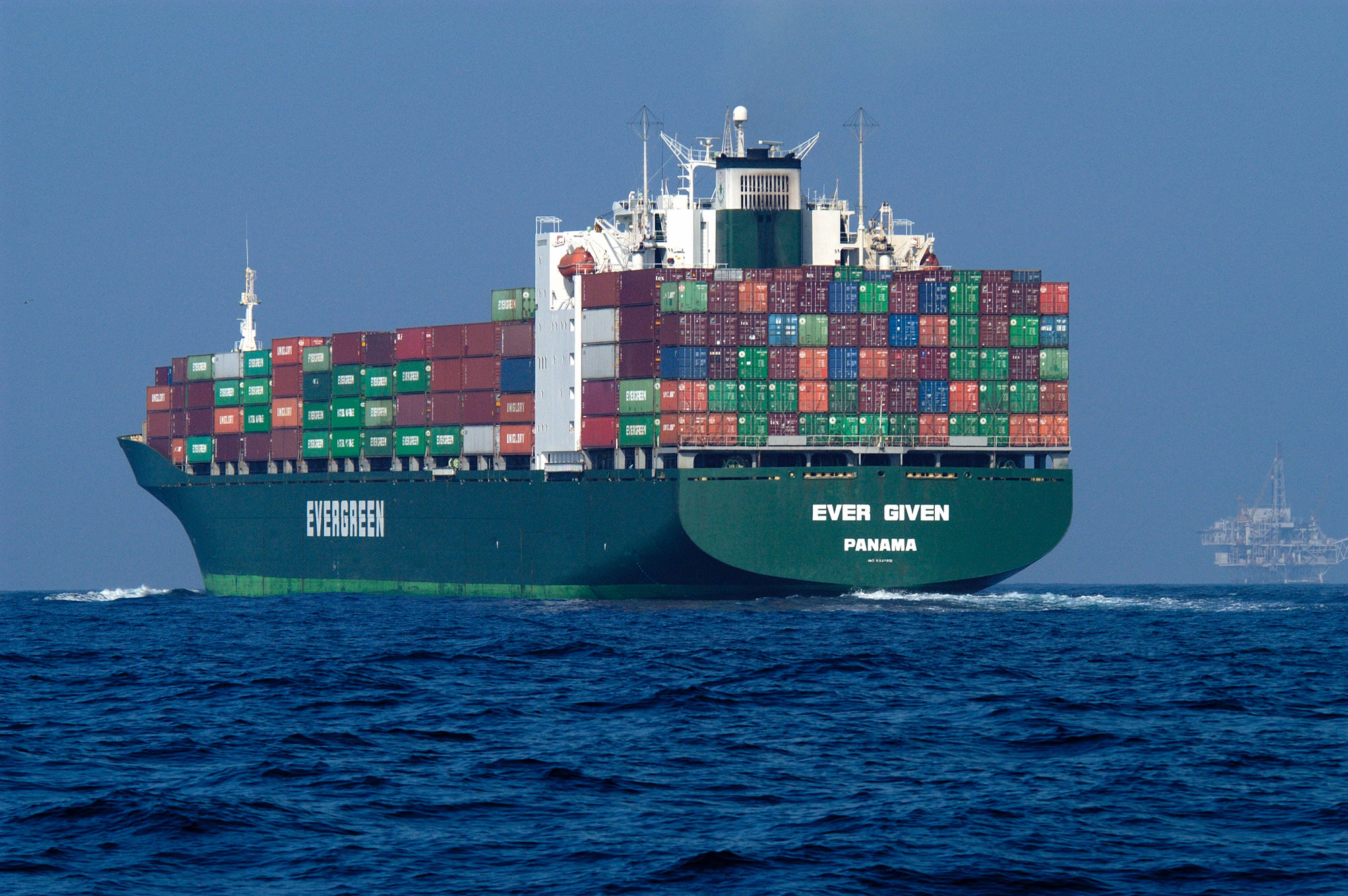
Merits
1. It handles more than 80% of Nigeria Import Export Trade
2. It carries a lot of load and people.
3. The water ways are free gift of nature which need no money as such to construct.
4. It is safe means of transportation than road.
Demerits
1. Water transportation is very slow
2. Rivers in Nigeria are not navigable throughout the year
(c) Air Transportation
Air transportation within Nigeria started in 1947 with the West African Airway Corporation (WAAC). Its activities were later taken up in 1959 by Nigerian Airways. The first aeroplane landed in kano in 1947. There are about sixteen air fields in Nigeria.
Out of these, six are international airports. They are the Murtala Muhammed Airports at Ikeja, Aminu Kano, kano, Ilorin Airport, Kaduna, Port Harcourt and Abuja airports. Airline operators in Nigeria include K.L.M, Dutch Airline, Ghana Airways, British Airways and Lufthansa. Private Airlines include Kabo and Albarka Airlines.

Merits
1. Air is the fastest means of transportation
2. It is very comfortable.
Demerits
1. Transport by air is very expensive for passengers.
2. Bad weather could cause plane crash
Evaluation:
(i) State three means of modern transportation
(ii) Mention two merits two demerits each for land, water and air
READING ASSIGNMENT: Read chapter 18 of Solakat Social studies for Junior Secondary School Volume two by A. Oluwasola Oyewole pages 71-75
ASSIGNMENT
OBJECTIVE QUESTIONS:
1. The most wisely used system of transport in the world is …….
A. Air transport B. Inland water ways C. Rail transport D. Road transport
2. The first railway line was built in the year ……. A. 1820 B. 1822 C. 1824 D. 1825
3. An international Airport is located in one of these towns …….. in Nigeria A. Asaba B. Port Harcourt C. Benin D. Kaduna
4. One major advantage which road transport has over rail is that it……..
A. Competes with rail transport B. Is cheaper than rail C. Provides door to door services D. Is not affected by fog
5. Express Highways are divided in the centre by a land called …….. A. bridge B. Flyover C. Interchange D. Median Strip
ESSAY QUESTIONS:
1. Explain the concept of transportation
2. Mention three means of transportation in the olden days.
3. State three means of modern transportation
4. Mention two merits two demerits each for land, water and air
5. Explain pipeline as a means of transportation.
watch video
https://youtu.be/Kry52TMBbqg
practice test
http://www.proprofs.com/quiz-school/sto ... -transport
TOPIC: TRANSPORTATION
CONTENT:
(a) Meaning of transportation
(b) Olden days means of transportation
MEANING OF TRANSPORTATION
Transportation is the movement of people, goods and services from one place to another either by land air or water. Transportation in Nigeria is made up of the indigenous and modern means of transport. The indigenous means of transport is transport that has been in use before the introduction of the modern means of transport.

MODERN MEANS OF TRANSPORT
OLDEN DAYS MEANS OF TRANSPORTATION
1. Human Portage and Trekking
This is the oldest means of transport in Nigeria. This is a means of transport in which goods (loads), are carried by people either on their heads, shoulders or on their backs, with these loads the people walk on their feet to whatever destination they desire.

2. Beast of Burden
Sometimes people use some animals to carry their goods as well as human beings from one place to the other. The animals that are used for this purpose are called beast of burden. Examples of beast of burden are horses, camels, donkeys, oxen, mules, asses etc. The beast of burden is still very much in use in the interior of northern Nigeria today.

3. Canoes/Rafts
Canoes are old means of transport in the riverine areas of Nigeria. The canoes are carved out of the trunk of big trees. They were used and are still used to convey people and goods from one place to the other in the riverine areas of the country.


CANOES AS AN OLD MEANS OF TRANSPORT
Evaluation:
1. Explain the concept of transportation
2. Mention three means of transportation in the olden days.
LESSON 9
MODERN MEANS OF TRANSPORTATION
Modern system of transport started with the invention of steam engine between 1700 and 1825. Modern means of transportation in form of cars, lorries, railway, ships aeroplane was introduced to our country by the British who colonized
Types of Transport
The modern means of transport in Nigeria are as follows:
(a) Land: Roads and railways
(b) Water
(c) Air
(a) Land Transportation:

(1) Railway: This was built by colonial government first in1825 to facilitate import export trade in Nigeria. The first railway line started in Lagos in 1898 through Abeokuta to lbadan and was completed 1901. Today, the Nigeria railway system linked many important towns. Some of the states that are not served by railway are Akwa lbom, Delta, Edo, Cross Rivers, Ondo and Taraba States. The Nigeria Railway Corporation (NRC) was established on October 1st, 1955 to control the railway system.

TRAIN AS A MODERN MEANS OF TRANSPORT
Merits of Railway
(1) It is safer than road transportation. Accident is not common.
(2) Railways charged a lower fee than any other forms transport.
(3) It is capable of carrying more loads and people than any other form of transportation
Demerits
1. Unlike in developed countries like Japan and Britain, Railway is the Slowest means of transportation in Nigeria.
2. It serves only a very few towns in Nigeria
3. It is very expensive to build.
(2) Road Transportation:
(a) Trunk “A” roads are constructed and maintained by the Federal Government. The link various towns cities of various states. An example is Lagos lbadan Express way which is a dual carriage way.
(b) Trunk “B’ roads are constructed and maintained by State Governments. They linked different towns, villages and cities together within a state.
(c) Trunk “C” roads are built and maintained by local Government Councils. Majority of them are laterite roads while some are tarred.
Merits
1. Road is cheaper to construct than railway
2. It complements all other forms of transportation. It takes you down to your destination.
3. It is faster than railway
4. It provides door to door services
Demerits
1. There is a high rate of accident on our roads.
2. Traffic congestion is a great problem of transportation in urban centres
3. Roads are difficult to construct on a rough topographies such as swamp and lagoon.

MODERN MEANS OF TRANSPORT BY ROADS
(b) Water Transportation
We have two types of water transportation. These are inland water ways and ocean navigation.
(i) Inland Water Ways: Before railways were built, the inland water ways on creeks, rivers and lagoons were the main routes by which the foreign traders from overseas reached the hinterland. These inland water ways are still being used by boat, canoe and ferry of various size.

(ii) Ocean Water Ways: Very large ships, ocean liners, etc sail on the ocean carrying passengers, export and import goods to and from USA, Germany, Togo, Ghana, Australia, etc. The Nigerian Ports Authority which is now called Nigerian Port PLC was established in 1954. It owns and controls all port in Nigeria.

Merits
1. It handles more than 80% of Nigeria Import Export Trade
2. It carries a lot of load and people.
3. The water ways are free gift of nature which need no money as such to construct.
4. It is safe means of transportation than road.
Demerits
1. Water transportation is very slow
2. Rivers in Nigeria are not navigable throughout the year
(c) Air Transportation
Air transportation within Nigeria started in 1947 with the West African Airway Corporation (WAAC). Its activities were later taken up in 1959 by Nigerian Airways. The first aeroplane landed in kano in 1947. There are about sixteen air fields in Nigeria.
Out of these, six are international airports. They are the Murtala Muhammed Airports at Ikeja, Aminu Kano, kano, Ilorin Airport, Kaduna, Port Harcourt and Abuja airports. Airline operators in Nigeria include K.L.M, Dutch Airline, Ghana Airways, British Airways and Lufthansa. Private Airlines include Kabo and Albarka Airlines.

Merits
1. Air is the fastest means of transportation
2. It is very comfortable.
Demerits
1. Transport by air is very expensive for passengers.
2. Bad weather could cause plane crash
Evaluation:
(i) State three means of modern transportation
(ii) Mention two merits two demerits each for land, water and air
READING ASSIGNMENT: Read chapter 18 of Solakat Social studies for Junior Secondary School Volume two by A. Oluwasola Oyewole pages 71-75
ASSIGNMENT
OBJECTIVE QUESTIONS:
1. The most wisely used system of transport in the world is …….
A. Air transport B. Inland water ways C. Rail transport D. Road transport
2. The first railway line was built in the year ……. A. 1820 B. 1822 C. 1824 D. 1825
3. An international Airport is located in one of these towns …….. in Nigeria A. Asaba B. Port Harcourt C. Benin D. Kaduna
4. One major advantage which road transport has over rail is that it……..
A. Competes with rail transport B. Is cheaper than rail C. Provides door to door services D. Is not affected by fog
5. Express Highways are divided in the centre by a land called …….. A. bridge B. Flyover C. Interchange D. Median Strip
ESSAY QUESTIONS:
1. Explain the concept of transportation
2. Mention three means of transportation in the olden days.
3. State three means of modern transportation
4. Mention two merits two demerits each for land, water and air
5. Explain pipeline as a means of transportation.
watch video
https://youtu.be/Kry52TMBbqg
practice test
http://www.proprofs.com/quiz-school/sto ... -transport
WEEK 7
LESSON 10
TOPIC: ADVANTAGE AND PROBLEM OF THE MODERN MEANS OF TRANSPORTATION
CONTENT:
(a) Advantages of modern means of transportation
(b) Problems of modern means of transportation
ADVANTAGE OF THE MODERN MEANS OF TRANSPORTATION
The various modern means of transportation has the following advantages.
1. Movement is made easier
2. Movement is made faster
3. More people and things are transported easily.
4. It is more comfortable.
5. It last longer.
PROBLEMS OF MODERN TRANSPORTATION
1. Poor maintenance culture: Modern transportation requires constant maintenance of roads, air ports, railway etc which is lacking in some countries like Nigeria.
2. High cost of purchase: Modern means of transportation is very costly to acquire and to maintain.
3. Corruption: The problem of corruption that is association with our government has left our roads not maintained with a lot of pot holes. The airport and seaports even the rail lines are left uncared for.
4. Traffic congestion: This is a big problem that faces transport by road, the few available roads are not maintained leading to the development of pot holes. This truncates the free flow of traffic.

5. Inadequate facilities: Modern forms of transportation in terms of good road network, railway and airport are inadequate in Nigeria.
6. Accident: Modern forms of transportation often lead to loss of many lives and properties through accident.

7. Robbery: Loss of vehicles to robbers who snatch cars cause problem to the car owner.

Evaluation:
(i) List three advantages of modern means of transportation
(ii) Mention three problems of modern means of transportation
LESSON 11
SOLUTIONS TO PROBLEMS OF MODERN MEANS OF TRANSPORTATION
1. Subsidized cost of purchase: Government should subsidize the cost of getting means of transportation so as to make it affordable to the people.
2. Practice of good maintenance culture: All vehicle owners should develop a good maintenance culture. This will help the vehicles to last long for them. Aircraft and train operators should take the issue of maintenance every seriously. They should set aside some part of their profit and time for maintenance.
3. Development of infrastructural facilities: All the infrastructural facilities that concern transportation should be developed to meet acceptable standards roads, airports, seaports and railway stations lines should be adequately developed to remove all hiccups in the system.
4. Robbery should be combated: All the security agents in the country should be put on alert to combat all forms of vehicles, boat and ship robbery.
5. Training: Road users such as Drivers, pilot, etc should be trained and re-trained to perform effectively.
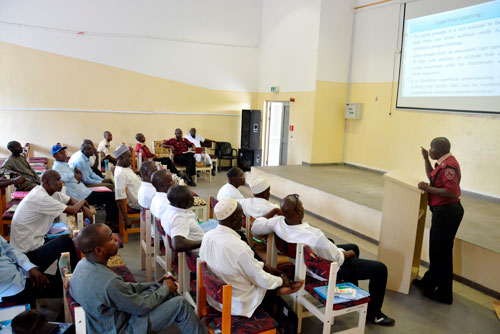
Evaluation:
(i) Suggest three ways of solving the problems of modern transportation.
READING ASSIGNMENT: Read chapter 18 of Solakat Social studies for Junior Secondary School Volume two by A. Oluwasola Oyewole pages 75-77
ASSIGNMENT
OBJECTIVE QUESTIONS:
1. One of the advantages of Rail transport is that it is ……… A. Cheap B. Expensive C. Fast D. Slow
2. The means of carrying persons and goods from one place to another is referred to as A. Movement B. Communication C. Transportation D. Carriage
3. The cheapest means of transporting heavy goods is by A. air B. Pipeline C. rail D. road
4. Transportation can be categorized into ……., …… and …… A. air, water, road B. Land, water, air C. road, rail, air D. water, rail, road,
5. The cheapest way to ease transportation problem in Nigeria is to revive the ……… transport system. A. air B. inland water ways C. ocean D. rail
Theory Questions:
(i) List three advantages of modern means of transportation
(ii) Mention three problems of modern means of transportation
(iii) Suggest three ways of solving the problems of modern transportation.
TOPIC: ADVANTAGE AND PROBLEM OF THE MODERN MEANS OF TRANSPORTATION
CONTENT:
(a) Advantages of modern means of transportation
(b) Problems of modern means of transportation
ADVANTAGE OF THE MODERN MEANS OF TRANSPORTATION
The various modern means of transportation has the following advantages.
1. Movement is made easier
2. Movement is made faster
3. More people and things are transported easily.
4. It is more comfortable.
5. It last longer.
PROBLEMS OF MODERN TRANSPORTATION
1. Poor maintenance culture: Modern transportation requires constant maintenance of roads, air ports, railway etc which is lacking in some countries like Nigeria.
2. High cost of purchase: Modern means of transportation is very costly to acquire and to maintain.
3. Corruption: The problem of corruption that is association with our government has left our roads not maintained with a lot of pot holes. The airport and seaports even the rail lines are left uncared for.
4. Traffic congestion: This is a big problem that faces transport by road, the few available roads are not maintained leading to the development of pot holes. This truncates the free flow of traffic.

5. Inadequate facilities: Modern forms of transportation in terms of good road network, railway and airport are inadequate in Nigeria.
6. Accident: Modern forms of transportation often lead to loss of many lives and properties through accident.

7. Robbery: Loss of vehicles to robbers who snatch cars cause problem to the car owner.

Evaluation:
(i) List three advantages of modern means of transportation
(ii) Mention three problems of modern means of transportation
LESSON 11
SOLUTIONS TO PROBLEMS OF MODERN MEANS OF TRANSPORTATION
1. Subsidized cost of purchase: Government should subsidize the cost of getting means of transportation so as to make it affordable to the people.
2. Practice of good maintenance culture: All vehicle owners should develop a good maintenance culture. This will help the vehicles to last long for them. Aircraft and train operators should take the issue of maintenance every seriously. They should set aside some part of their profit and time for maintenance.
3. Development of infrastructural facilities: All the infrastructural facilities that concern transportation should be developed to meet acceptable standards roads, airports, seaports and railway stations lines should be adequately developed to remove all hiccups in the system.
4. Robbery should be combated: All the security agents in the country should be put on alert to combat all forms of vehicles, boat and ship robbery.
5. Training: Road users such as Drivers, pilot, etc should be trained and re-trained to perform effectively.

Evaluation:
(i) Suggest three ways of solving the problems of modern transportation.
READING ASSIGNMENT: Read chapter 18 of Solakat Social studies for Junior Secondary School Volume two by A. Oluwasola Oyewole pages 75-77
ASSIGNMENT
OBJECTIVE QUESTIONS:
1. One of the advantages of Rail transport is that it is ……… A. Cheap B. Expensive C. Fast D. Slow
2. The means of carrying persons and goods from one place to another is referred to as A. Movement B. Communication C. Transportation D. Carriage
3. The cheapest means of transporting heavy goods is by A. air B. Pipeline C. rail D. road
4. Transportation can be categorized into ……., …… and …… A. air, water, road B. Land, water, air C. road, rail, air D. water, rail, road,
5. The cheapest way to ease transportation problem in Nigeria is to revive the ……… transport system. A. air B. inland water ways C. ocean D. rail
Theory Questions:
(i) List three advantages of modern means of transportation
(ii) Mention three problems of modern means of transportation
(iii) Suggest three ways of solving the problems of modern transportation.
WEEK 8
LESSON 12
TOPIC: HARMFUL SUBSTANCES
CONTENT: (a) Meaning of harmful substances
(b) Examples of harmful substances
(c) Ways of preventing intake of harmful substances
MEANING OF HARMFUL SUBSTANCES
A harmful substance is any things that is contaminated and threatens the safety of man in his environment. Harmful substances can be in the form of food, water, drugs, creams, fruits etc. Harmful substances are unfit for human consumption.

Harmful Substances
Examples Of Harmful Substances
Harmful substances can be found all around us, we come across them in our daily activities. The following are some of the harmful substances that we see around us.
1. Stale Food: This is food that is no longer fresh and therefore unpleasant to eat. All types of food can become stale if it is not properly preserved. For example bread that has been left on the table for about one week will become stale and infected with bacteria or fungi. Such food becomes a harmful substance to the body.

2. Poorly Cooked Food: Food should be properly cooked before eating as some of them such as meat or fish may carry certain parasites that are not fit for human consumption.
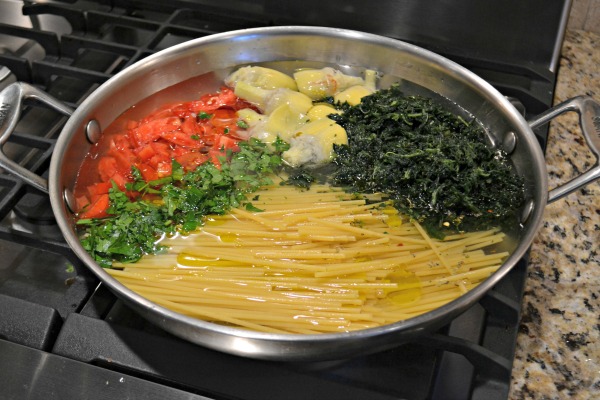
3. Rotten Food: Such as fruit, meat or fish are harmful substance that are not fit for human consumption
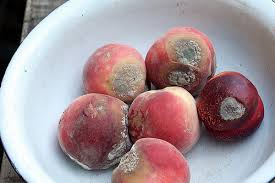
4. Infected Food: Food that has been exposed to insects, like flies, cockroaches, rats, ants etc. is said to be infested. Such food is no longer fit for consumption because eating of such food can cause great harm to the body.

5. Unripe Fruit: Unripe fruits are dangerous to health, because of the high level of acid they contain; this makes it harmful to the body. High acidity causes damage to the internal organs.
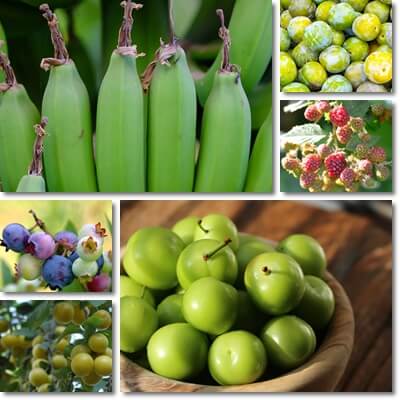
6. Impure Water: Contaminated water is also very harmful to the body. No matter how small the contamination is, it makes it impure and not good for consumption. Water can only be considered pure if it is colourless, odourless and tasteless.

7. Fake Products: Fake food, drug and drinks are not fit for human consumption. An original product must carry NAFDAC Registration number.

Evaluation:
1. Explain the meaning of harmful substances.
2. List four examples of harmful substance.
LESSON 13
WAYS OF PREVENTING INTAKE OF HARMFUL SUBSTANCES
1. Avoid eating stale food: Stale food, drug and drinks should not be taken. To prevent these items from becoming stale, they should be preserved through refrigeration, drying, etc.
2. Proper cooking: Food should be properly cooked and prepared before eating.
3. Dirty and Infected food: food should be hygienically prepared to prevent it from being infected with germs. Furthermore, dirty and already infected food must be avoided.
4. Expiry Date: Food, drug and drinks producers are mandated to indicate the manufactured and expiry dates on their products. Consumers should endeavor to check the expiry date of the products they want to buy and avoid buying product without expiry date.
5. Fake Product: Consumers should avoid consumption of fake products that have not got NAFDAC registration number.

SMOKE AS AN HARMFUL SUBSTANCE
Evaluation:
1. Mention three ways of preventing the intake of harmful substances.
READING ASSIGNMENT: Read chapter 13 of Solakat Social studies for Junior Secondary School Volume two by A. Oluwasola Oyewole pages 51-52
ASSIGNMENT
OBJECTIVE QUESTIONS:
1. Which of these organizations responsible for checking of fake products A. UNESCO B.UNICEF C.EFCC D.NAFDAC
2. Which of the following is NOT an harmful substance? A. Stale food B. Expired Drug C. Fake D. Jolof Rice
3. Food should be properly cooked and prepared before eating. True or False
4. Consumers should endeavor to check the expiry date of the products they want to buy and avoid buying product without expiry date. Yes or No
5. High acidity causes damage to the internal organs. When you take what? A. Fake Product B. Expired Food C. Unripe fruit D. Infected Food
ESSAY QUESTIONS
1. Explain the meaning of harmful substances.
2. List four examples of harmful substance.
3. Mention three ways of preventing the intake of harmful substances.
TOPIC: HARMFUL SUBSTANCES
CONTENT: (a) Meaning of harmful substances
(b) Examples of harmful substances
(c) Ways of preventing intake of harmful substances
MEANING OF HARMFUL SUBSTANCES
A harmful substance is any things that is contaminated and threatens the safety of man in his environment. Harmful substances can be in the form of food, water, drugs, creams, fruits etc. Harmful substances are unfit for human consumption.

Harmful Substances
Examples Of Harmful Substances
Harmful substances can be found all around us, we come across them in our daily activities. The following are some of the harmful substances that we see around us.
1. Stale Food: This is food that is no longer fresh and therefore unpleasant to eat. All types of food can become stale if it is not properly preserved. For example bread that has been left on the table for about one week will become stale and infected with bacteria or fungi. Such food becomes a harmful substance to the body.

2. Poorly Cooked Food: Food should be properly cooked before eating as some of them such as meat or fish may carry certain parasites that are not fit for human consumption.

3. Rotten Food: Such as fruit, meat or fish are harmful substance that are not fit for human consumption

4. Infected Food: Food that has been exposed to insects, like flies, cockroaches, rats, ants etc. is said to be infested. Such food is no longer fit for consumption because eating of such food can cause great harm to the body.

5. Unripe Fruit: Unripe fruits are dangerous to health, because of the high level of acid they contain; this makes it harmful to the body. High acidity causes damage to the internal organs.

6. Impure Water: Contaminated water is also very harmful to the body. No matter how small the contamination is, it makes it impure and not good for consumption. Water can only be considered pure if it is colourless, odourless and tasteless.

7. Fake Products: Fake food, drug and drinks are not fit for human consumption. An original product must carry NAFDAC Registration number.

Evaluation:
1. Explain the meaning of harmful substances.
2. List four examples of harmful substance.
LESSON 13
WAYS OF PREVENTING INTAKE OF HARMFUL SUBSTANCES
1. Avoid eating stale food: Stale food, drug and drinks should not be taken. To prevent these items from becoming stale, they should be preserved through refrigeration, drying, etc.
2. Proper cooking: Food should be properly cooked and prepared before eating.
3. Dirty and Infected food: food should be hygienically prepared to prevent it from being infected with germs. Furthermore, dirty and already infected food must be avoided.
4. Expiry Date: Food, drug and drinks producers are mandated to indicate the manufactured and expiry dates on their products. Consumers should endeavor to check the expiry date of the products they want to buy and avoid buying product without expiry date.
5. Fake Product: Consumers should avoid consumption of fake products that have not got NAFDAC registration number.

SMOKE AS AN HARMFUL SUBSTANCE
Evaluation:
1. Mention three ways of preventing the intake of harmful substances.
READING ASSIGNMENT: Read chapter 13 of Solakat Social studies for Junior Secondary School Volume two by A. Oluwasola Oyewole pages 51-52
ASSIGNMENT
OBJECTIVE QUESTIONS:
1. Which of these organizations responsible for checking of fake products A. UNESCO B.UNICEF C.EFCC D.NAFDAC
2. Which of the following is NOT an harmful substance? A. Stale food B. Expired Drug C. Fake D. Jolof Rice
3. Food should be properly cooked and prepared before eating. True or False
4. Consumers should endeavor to check the expiry date of the products they want to buy and avoid buying product without expiry date. Yes or No
5. High acidity causes damage to the internal organs. When you take what? A. Fake Product B. Expired Food C. Unripe fruit D. Infected Food
ESSAY QUESTIONS
1. Explain the meaning of harmful substances.
2. List four examples of harmful substance.
3. Mention three ways of preventing the intake of harmful substances.
WEEK 9
LESSON 14
TOPIC: Water Supply:
CONTENT: 1. Describe water supply
2. Sources of water supply
MEANING
Water supply can be described as a means of making water available for both domestic and industrial use. Water is an important part of human livelihood, there is hardly anything one can do without water. At home water is used for drinking, bathing, washing and cooking.
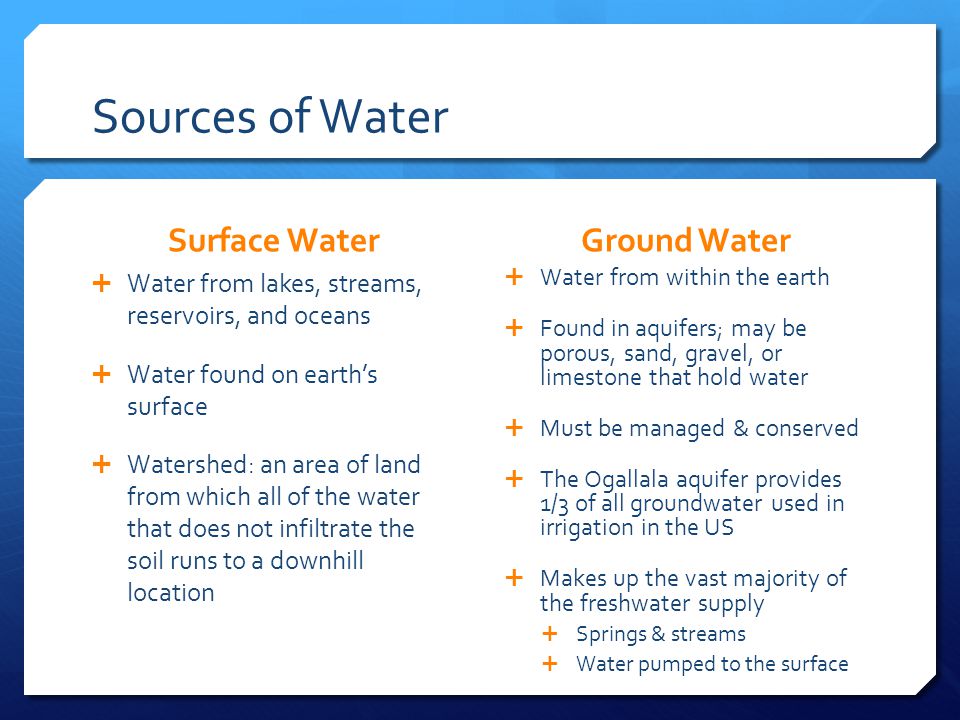
SOURCES OF WATER
Water can be got from different sources. The under listed are some of the sources of water.
1. Rainfall: Rainfall is the most common source of water in the world. Any water that falls from Sky is called rain, snow, hail etc. Which also refers to precipitation, Water from rain is used mainly for domestic and agricultural purposes. These are the types of rainfall.
Convectional Rainfall: The humidity of air occurs when water from lakes, sea or ocean evaporates and vapour are absorbed by the air. When the air is saturated with water, the water condenses and later falls as rain.
Relief Rainfall: At times, when the winds with saturated vapour are forced to rise over a highland, rain results. As they rise, they become cooler water vapour condenses to form drops of water which fall as rain on the wind ward side of the highland. The leeward side is however dry. This is also called orographic rainfall. It is common on highland such as Adamawa, Jos Plateau and Udi hills.
Frontal Rainfall: Frontal rainfall refers to the meeting of hot humid air and the heavy cold air to form cloud which results into rain. It is also called Cyclonic rainfall.

RAINFALL AS A SOURCE OF WATER
2. Rivers: This refers to a lager stream of water that flows continuously over a piece of land. Examples of rivers in Nigeria are Niger, Benue, Sokoto, Cross River, Osun, Osse and Ogun. Water from rivers are used for drinking, irrigation and industrial purposes.

3. Well: Well water is water that is got from the ground. A well is dug before such water is got. It is used mainly for domestic and agricultural activities. This is a major source of water in Nigeria, especially in areas where there is insufficient rainfall and no surface water like rivers etc.
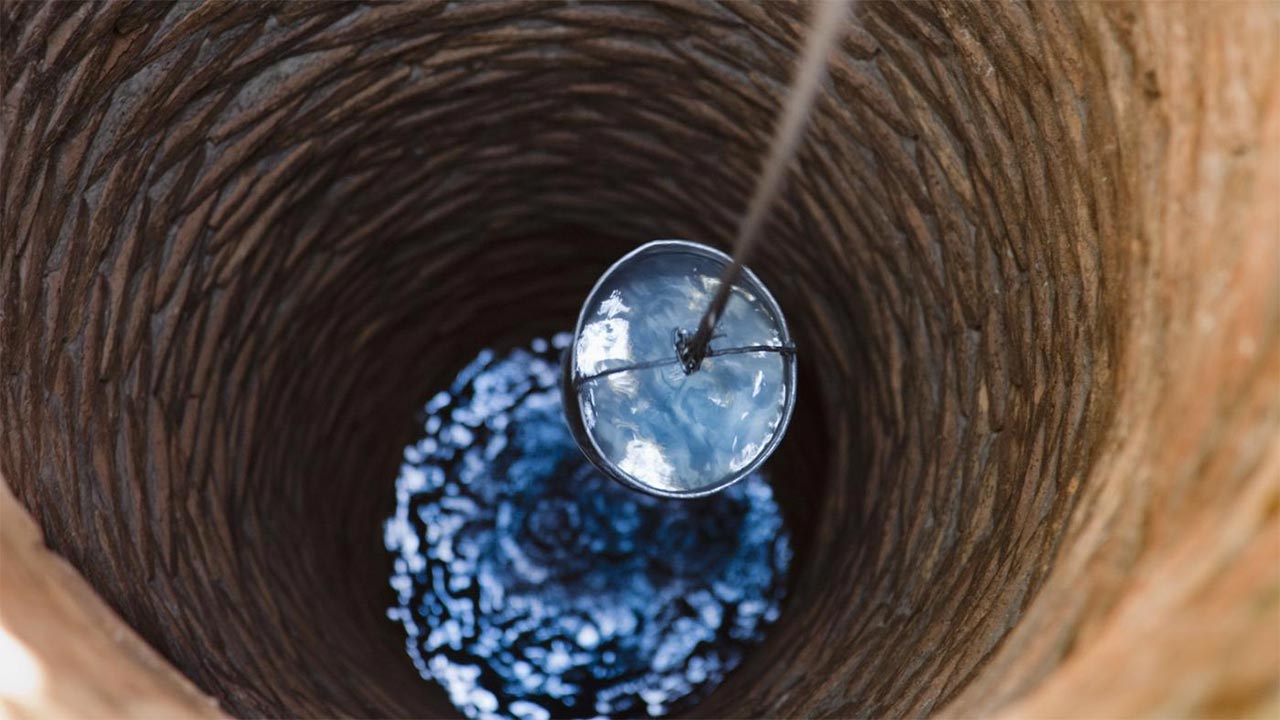
4. Bore holes: This is a scientific way of digging a deep hole in the ground and supply water to the tanker through electric device. It is commonly used in the city to provide water for domestic uses.
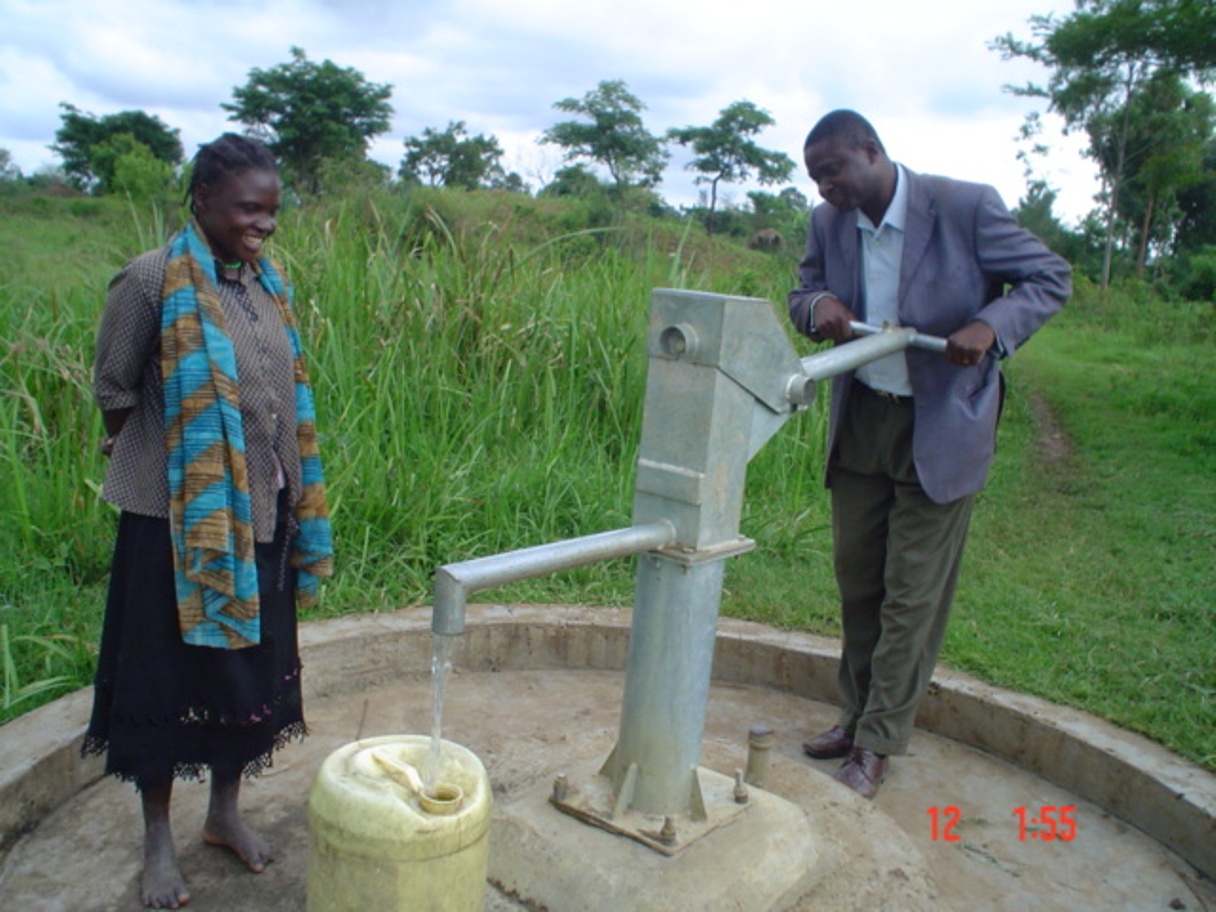
5. Spring: A spring is a hole in the ground through which water gushes out. Water from springs is used for domestic, agricultural as well as industrial purpose.
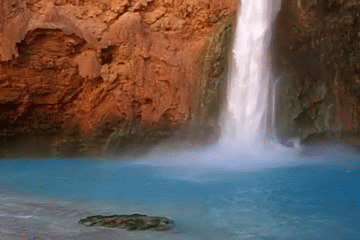
6. Stream: A stream is a small narrow river that flows on a piece of land. It often contains a lot of impurities because it flows slowly and sluggishly.

7. Tap Water: Water from tap is water that has been treated in reservoirs and supplied through pipes to where ever they are needed. It is mostly supplies by the states water board to homes and industries especially in urban areas.

Ways Of Keeping Our Sources Of Water Clean
Contaminated water is dangerous for both humans and animals. It can be injurious to plants; it is advisable to use only clean water. Consumption of impure water can lead to diseases like cholera, dysentery, diarrhoea, typhoid fever, skin irritation etc. Some of the ways of keeping our water clean include:
1. Prompt repair of burst water pipes: Pipes that carry water to our homes may get broken at any time. This must be quickly repaired so as to prevent running water or other impurities from getting into the pipe for onward delivery to the tap.
2. Well should be covered and be deep so as to get good water: A well should not be sunk near a pit toilet or soak away pit.
3. Clean bucket is also essential in fetching water from the well
4. Avoid dumping refuse into wells, streams, rivers etc. This harmful practice is common in the city.
5. Avoid using chemicals such as Gamalin 20 to catch fish in a river. The chemical will poison the water and make it to become harmful substance that is not fit for human consumption.
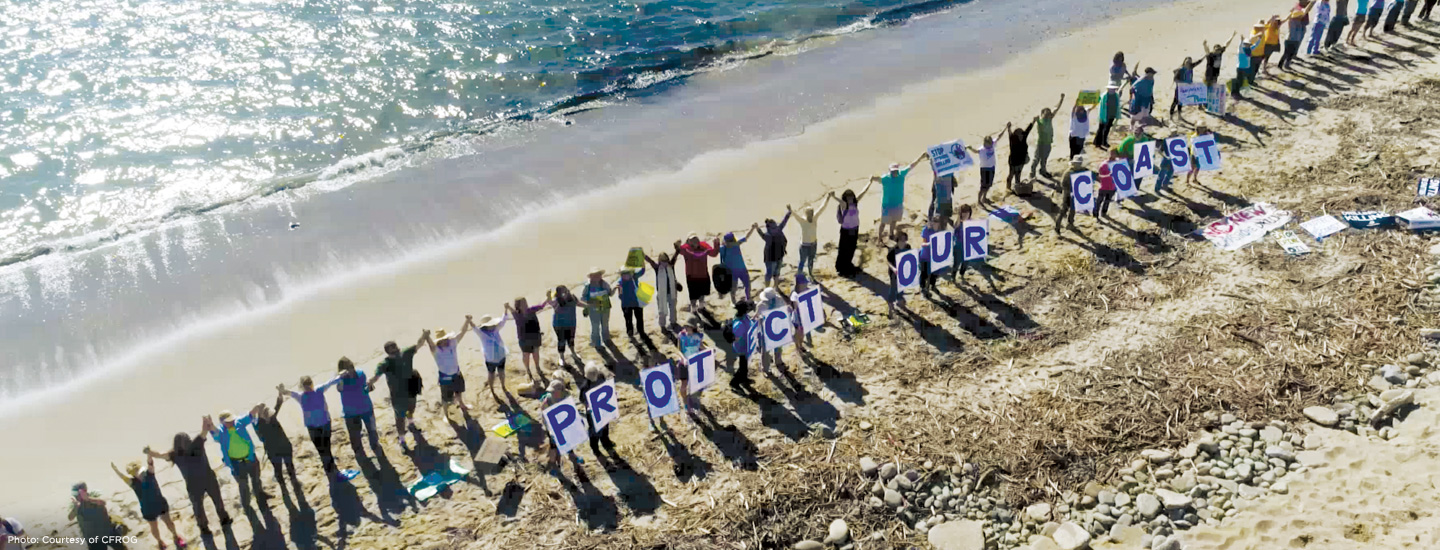
Evaluation:
1. Name four sources of water supply.
2. Describe one of them
3. State four ways of keeping our sources of water clean.
READING ASSIGNMENT: Read chapter 13 of Solakat Social studies for Junior Secondary School Volume two by A. Oluwasola Oyewole pages 52-54.
ASSIGNMENT
OBJECTIVE QUESTIONS:
1. Rivers take their source from the A. Coastal area B. High lands C. Low lands D. Middle belt
2. It rains most in Nigeria in the A. North-Central B. North –West C. South –East D. South –South
3. The place where water can be found in the desert is called A. Cliff B. Dam C. Lake D. Oasis
4. Man-made water ways are called A. Canals B. Dams C. Inland water ways D. Lakes
5. The Orographic rainfall is common on highland such as ……. A. Delta, Benin and Ondo B. Adamawa, Jos Plateau and Udi hills. C. Yobe, Yola and Jos Plateau D. Sokoto, Kano and Kaduna.
ESSAY QUESTIONS:
1. Name four sources of water supply.
2. Describe one of them
3. State four ways of keeping our sources of water clean.
TOPIC: Water Supply:
CONTENT: 1. Describe water supply
2. Sources of water supply
MEANING
Water supply can be described as a means of making water available for both domestic and industrial use. Water is an important part of human livelihood, there is hardly anything one can do without water. At home water is used for drinking, bathing, washing and cooking.

SOURCES OF WATER
Water can be got from different sources. The under listed are some of the sources of water.
1. Rainfall: Rainfall is the most common source of water in the world. Any water that falls from Sky is called rain, snow, hail etc. Which also refers to precipitation, Water from rain is used mainly for domestic and agricultural purposes. These are the types of rainfall.
Convectional Rainfall: The humidity of air occurs when water from lakes, sea or ocean evaporates and vapour are absorbed by the air. When the air is saturated with water, the water condenses and later falls as rain.
Relief Rainfall: At times, when the winds with saturated vapour are forced to rise over a highland, rain results. As they rise, they become cooler water vapour condenses to form drops of water which fall as rain on the wind ward side of the highland. The leeward side is however dry. This is also called orographic rainfall. It is common on highland such as Adamawa, Jos Plateau and Udi hills.
Frontal Rainfall: Frontal rainfall refers to the meeting of hot humid air and the heavy cold air to form cloud which results into rain. It is also called Cyclonic rainfall.

RAINFALL AS A SOURCE OF WATER
2. Rivers: This refers to a lager stream of water that flows continuously over a piece of land. Examples of rivers in Nigeria are Niger, Benue, Sokoto, Cross River, Osun, Osse and Ogun. Water from rivers are used for drinking, irrigation and industrial purposes.

3. Well: Well water is water that is got from the ground. A well is dug before such water is got. It is used mainly for domestic and agricultural activities. This is a major source of water in Nigeria, especially in areas where there is insufficient rainfall and no surface water like rivers etc.

4. Bore holes: This is a scientific way of digging a deep hole in the ground and supply water to the tanker through electric device. It is commonly used in the city to provide water for domestic uses.

5. Spring: A spring is a hole in the ground through which water gushes out. Water from springs is used for domestic, agricultural as well as industrial purpose.

6. Stream: A stream is a small narrow river that flows on a piece of land. It often contains a lot of impurities because it flows slowly and sluggishly.

7. Tap Water: Water from tap is water that has been treated in reservoirs and supplied through pipes to where ever they are needed. It is mostly supplies by the states water board to homes and industries especially in urban areas.

Ways Of Keeping Our Sources Of Water Clean
Contaminated water is dangerous for both humans and animals. It can be injurious to plants; it is advisable to use only clean water. Consumption of impure water can lead to diseases like cholera, dysentery, diarrhoea, typhoid fever, skin irritation etc. Some of the ways of keeping our water clean include:
1. Prompt repair of burst water pipes: Pipes that carry water to our homes may get broken at any time. This must be quickly repaired so as to prevent running water or other impurities from getting into the pipe for onward delivery to the tap.
2. Well should be covered and be deep so as to get good water: A well should not be sunk near a pit toilet or soak away pit.
3. Clean bucket is also essential in fetching water from the well
4. Avoid dumping refuse into wells, streams, rivers etc. This harmful practice is common in the city.
5. Avoid using chemicals such as Gamalin 20 to catch fish in a river. The chemical will poison the water and make it to become harmful substance that is not fit for human consumption.

Evaluation:
1. Name four sources of water supply.
2. Describe one of them
3. State four ways of keeping our sources of water clean.
READING ASSIGNMENT: Read chapter 13 of Solakat Social studies for Junior Secondary School Volume two by A. Oluwasola Oyewole pages 52-54.
ASSIGNMENT
OBJECTIVE QUESTIONS:
1. Rivers take their source from the A. Coastal area B. High lands C. Low lands D. Middle belt
2. It rains most in Nigeria in the A. North-Central B. North –West C. South –East D. South –South
3. The place where water can be found in the desert is called A. Cliff B. Dam C. Lake D. Oasis
4. Man-made water ways are called A. Canals B. Dams C. Inland water ways D. Lakes
5. The Orographic rainfall is common on highland such as ……. A. Delta, Benin and Ondo B. Adamawa, Jos Plateau and Udi hills. C. Yobe, Yola and Jos Plateau D. Sokoto, Kano and Kaduna.
ESSAY QUESTIONS:
1. Name four sources of water supply.
2. Describe one of them
3. State four ways of keeping our sources of water clean.